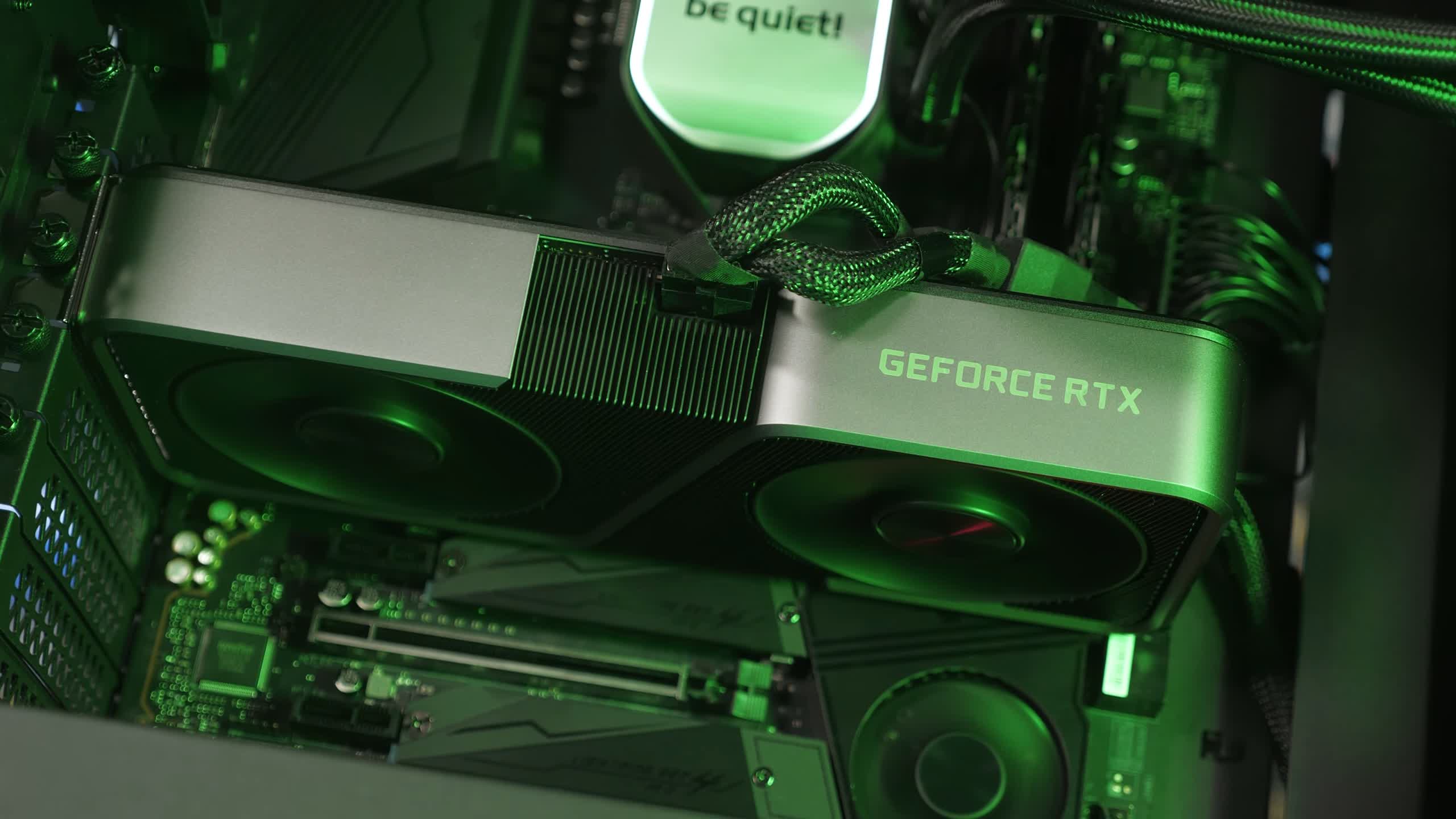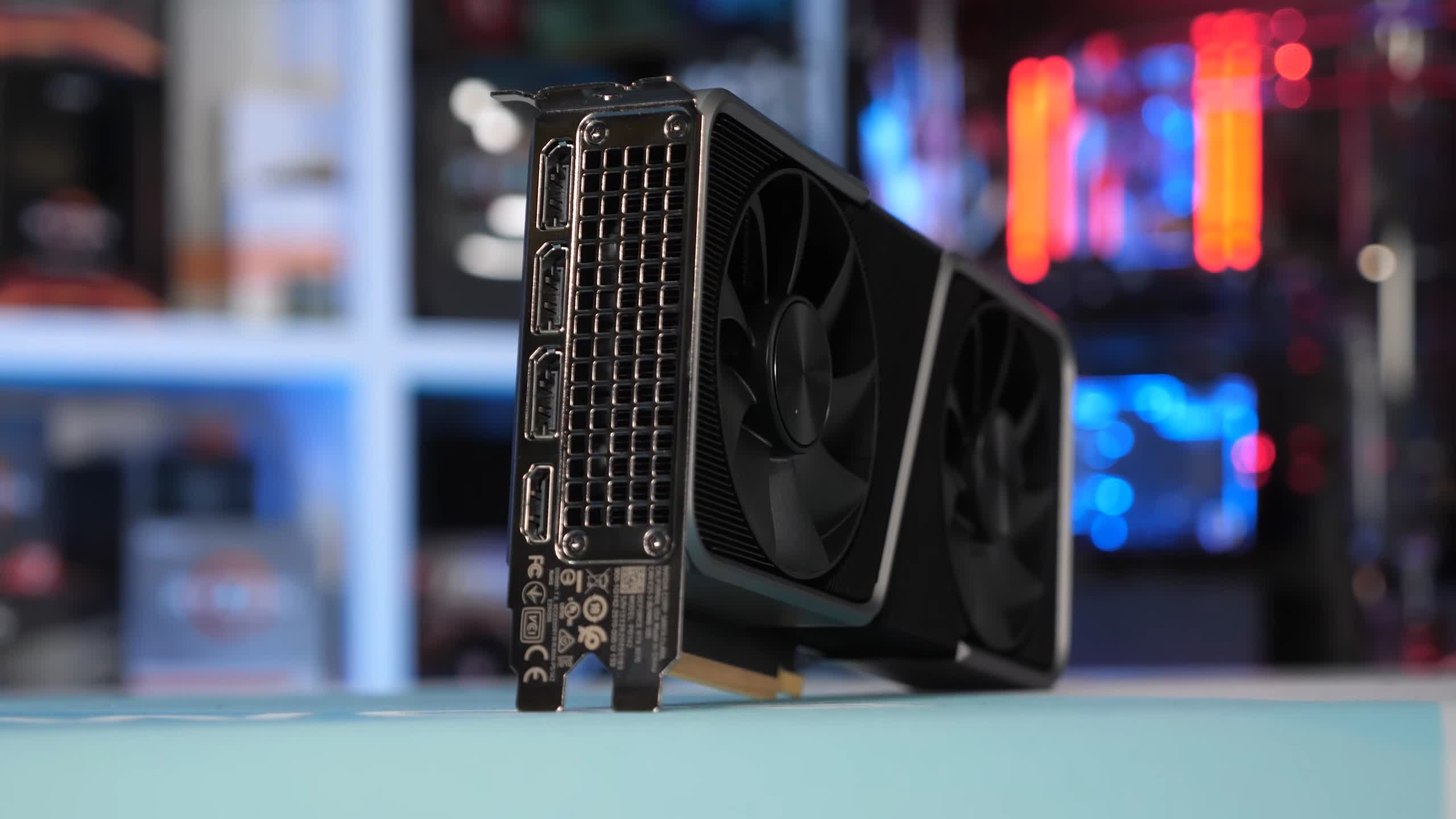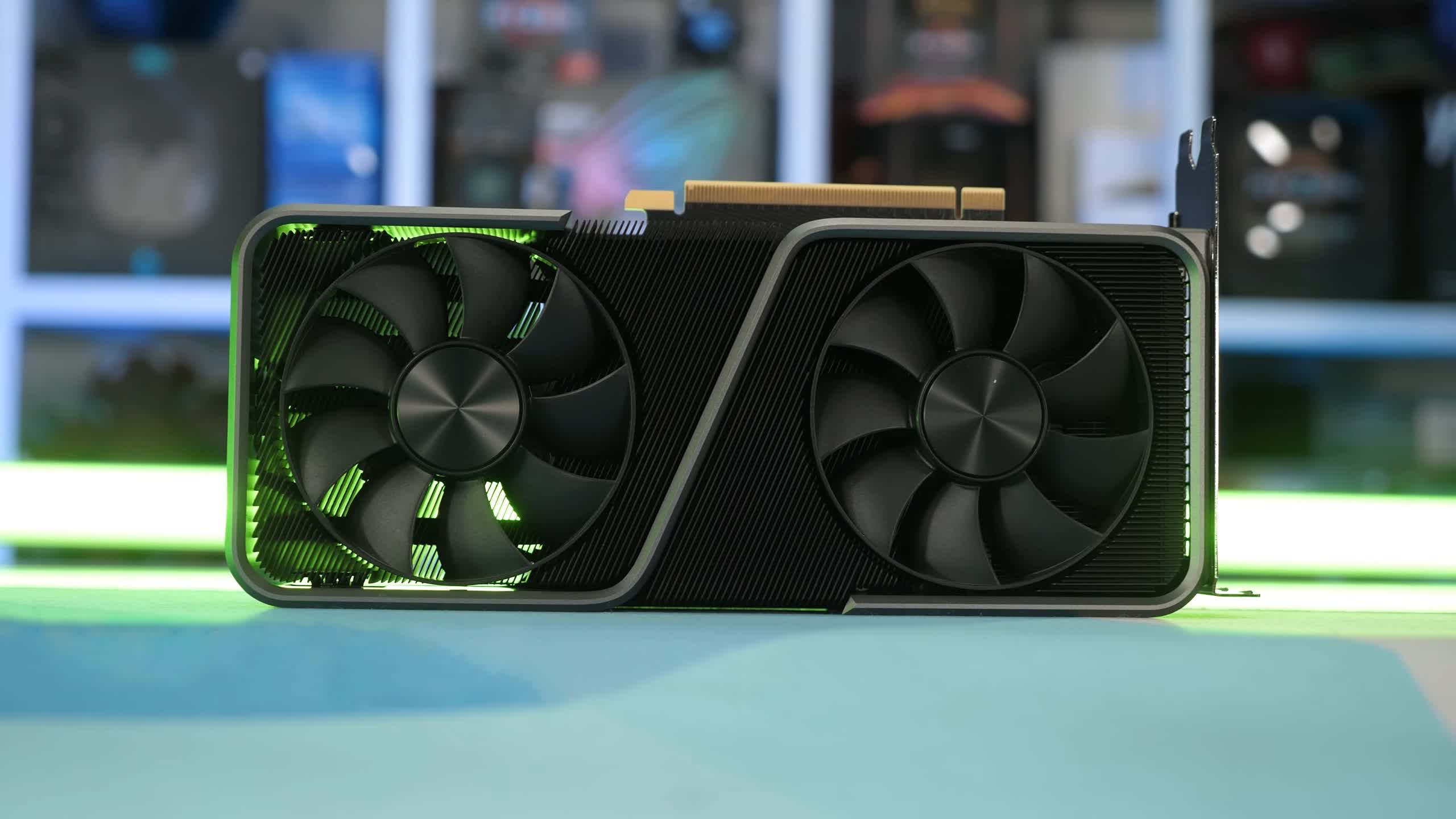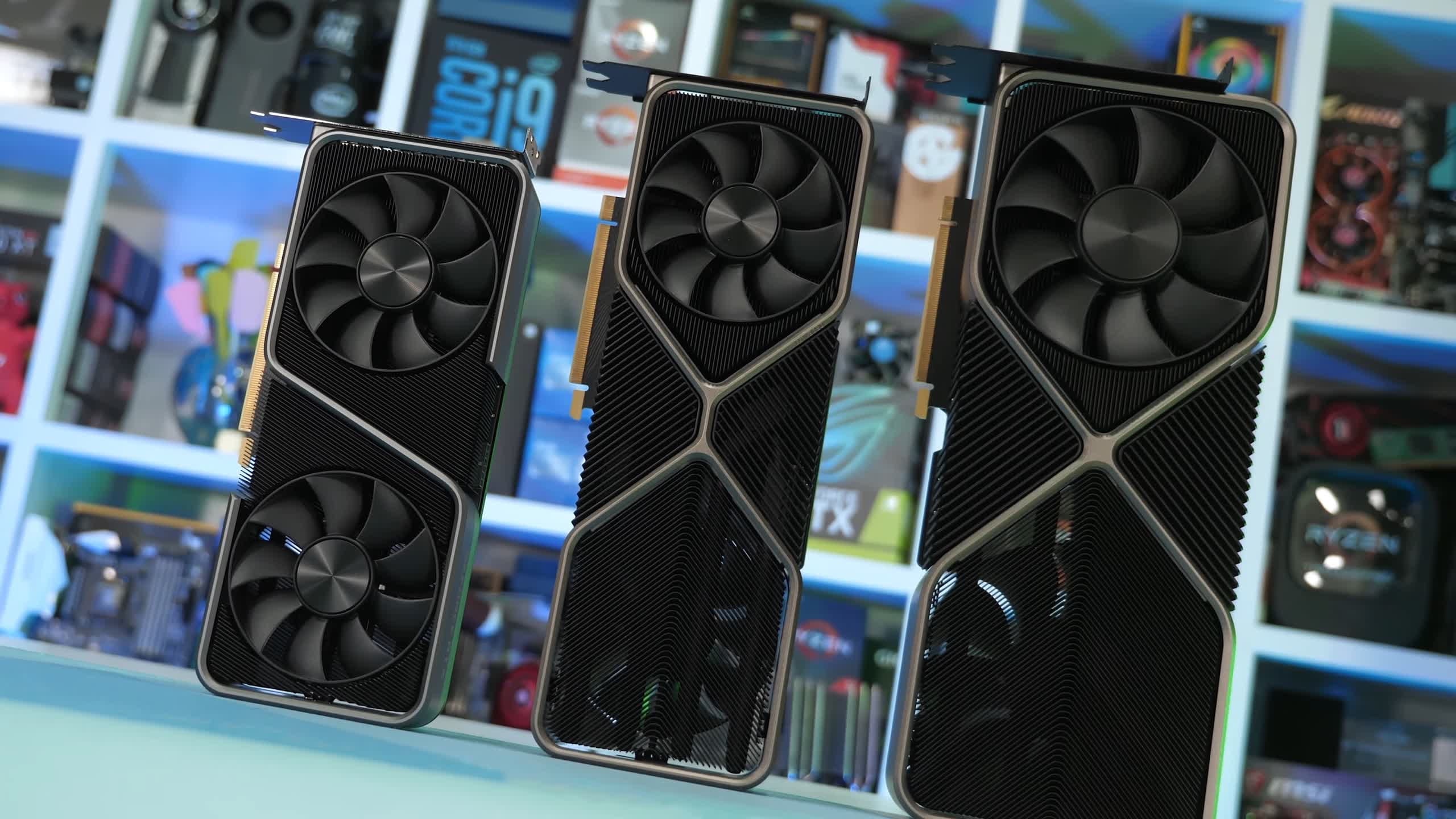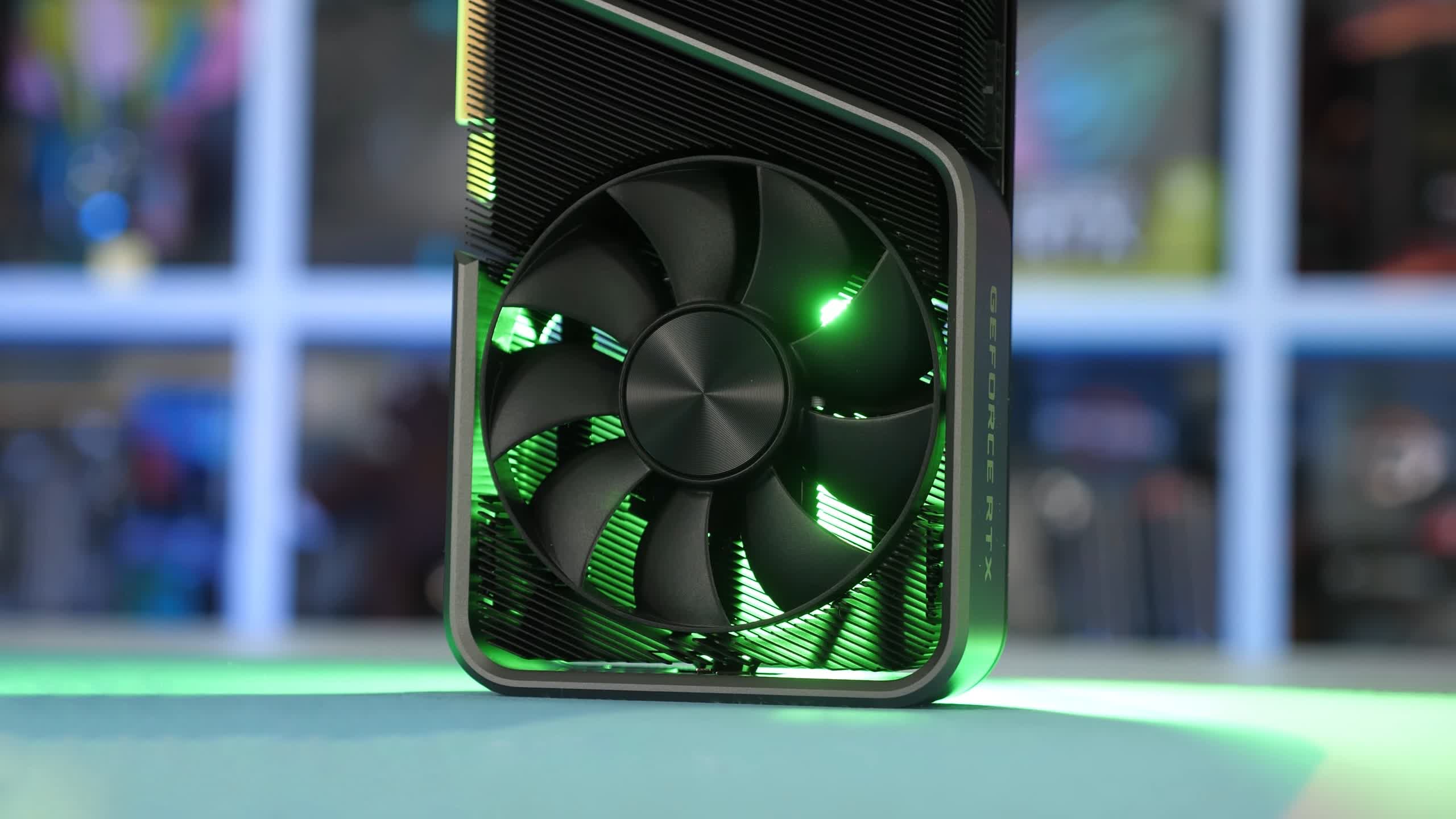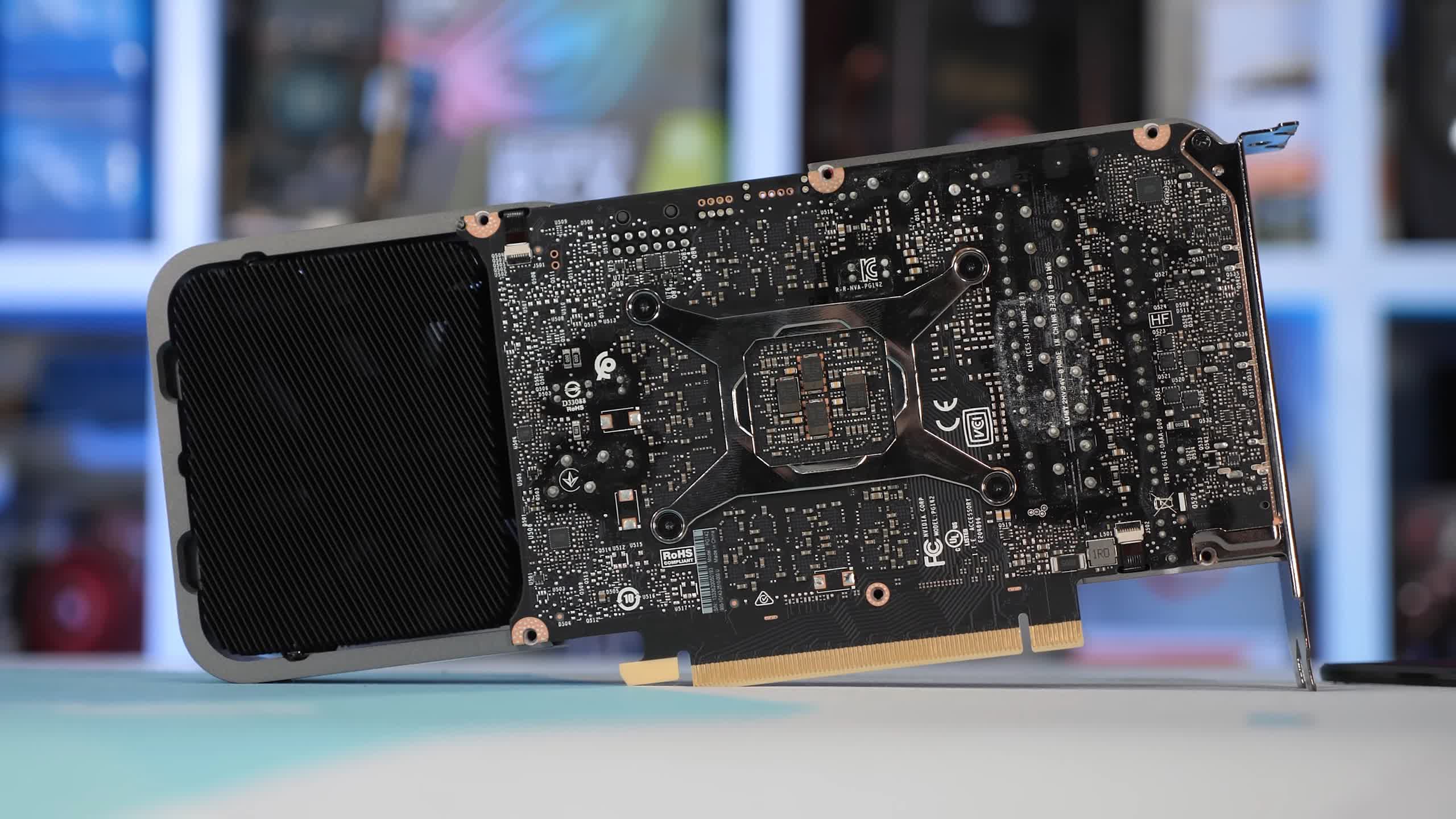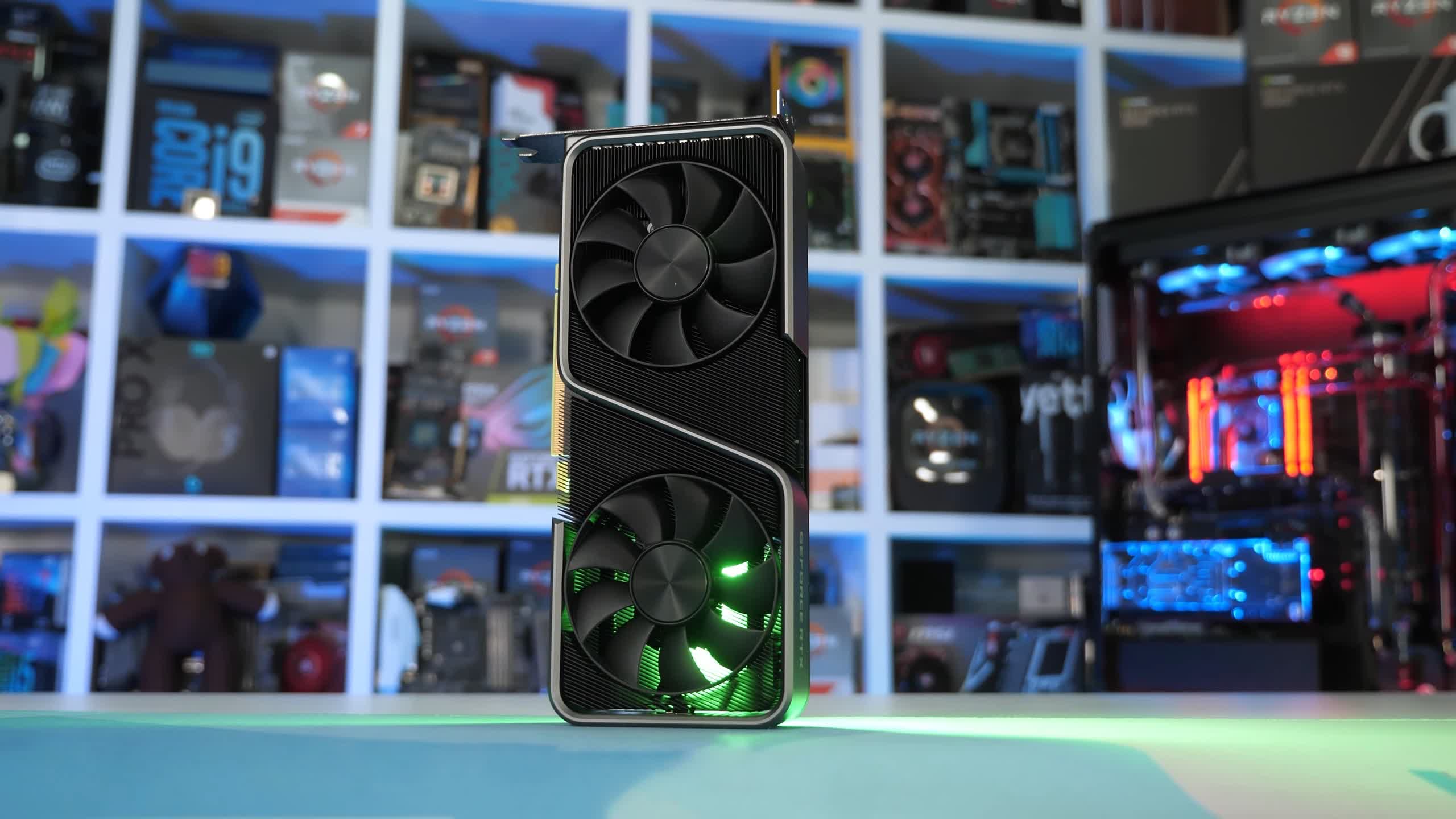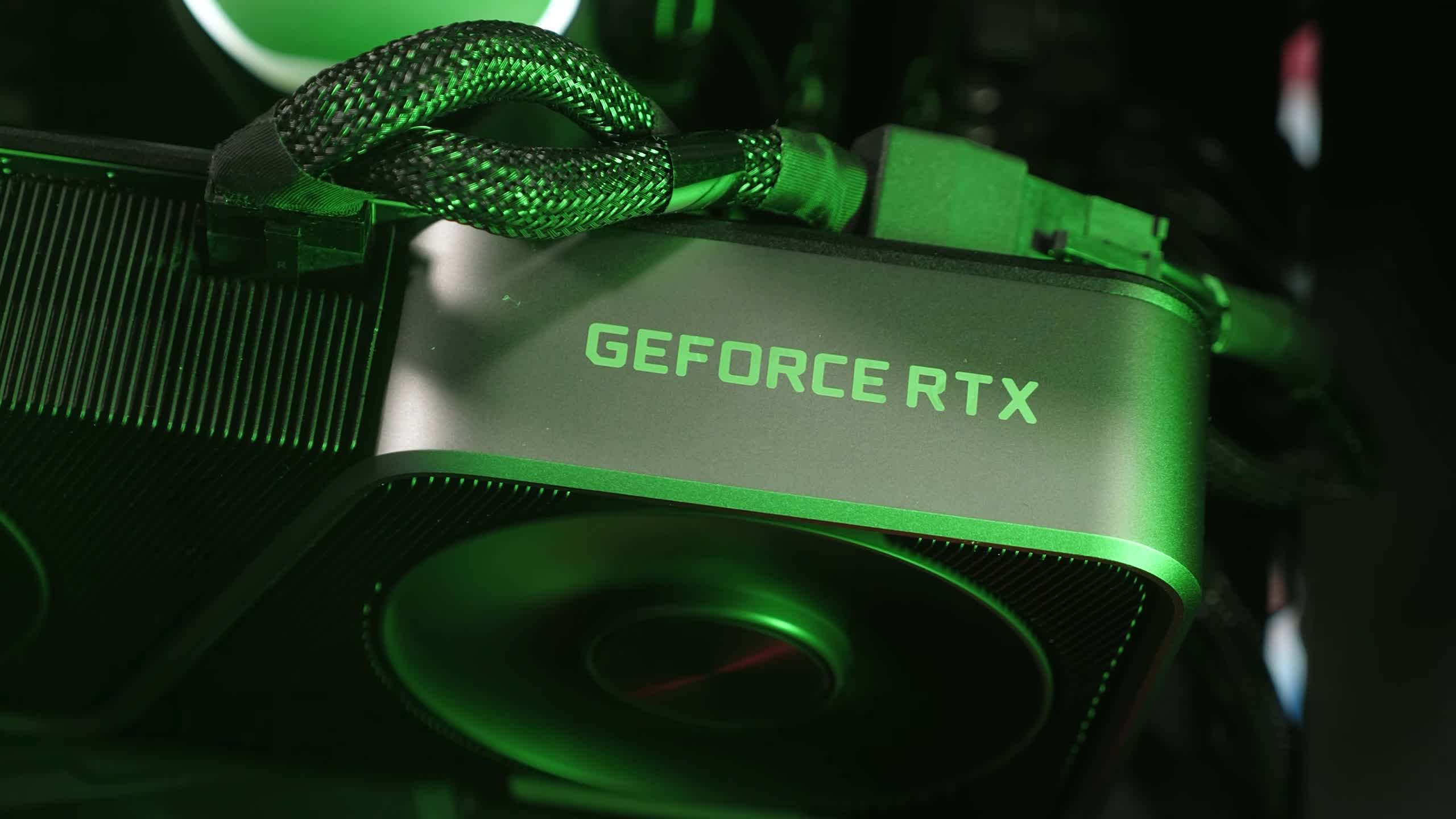The arrival of next-gen Ampere graphics in the form of the GeForce RTX 3080 and RTX 3090 had us testing and showing you benchmarks of these incredibly fast new GPUs. Unfortunately, very few of you have been able to buy them six weeks after the release of the RTX 3080, and availability is expected to be low for some time to come. Whether this is deliberate action (unlikely), demand miscalculation, or manufacturing issues – as so often happens in the industry – time is running out for Nvidia to hit the holiday season.
This situation has put more pressure on the more affordable GeForce RTX 3070. The card's launch was pushed to October 29, allowing Nvidia to build up a larger stockpile for release day. Hopefully your chances of buying a new RTX 3070 in two days' time when they hit shelves are much higher. Moving on from availability woes, the GeForce RTX 30 series is bound to remain an attractive option for gamers for months and even years to come.
Now let's talk about the RTX 3070 GPU.
The GeForce RTX 3070 is based on the GA104 die which is almost 40% smaller than what's used on the 3080 and 3090 (GA102). The GPU packs 32% fewer CUDA cores and TMUs, with the same 96 ROPs. The cores are clocked slightly higher, about 4% for the base clock and 1% for the boost clock.
| GeForce | RTX 3090 | RTX 3080 | RTX 3070 | RTX 2080 Ti |
|---|---|---|---|---|
| Price MSRP | $1500 | $700 | $500 | $1200 |
| Release Date | September 2020 | September 2020 | October 2020 | September 2018 |
| Process | Samsung 8N | TSMC12FFN | ||
| Transistors (billion) | 28.3 | 17.4 | 18.6 | |
| Die Size (mm2) | 628.4 | 392.5 | 754 | |
| Core Config | 10496 / 328 / 112 | 8704 / 272 / 96 | 5888 / 184 / 96 | 4352 / 272 / 88 |
| Core Clock Frequency | 1400 / 1700 MHz | 1440 / 1710 MHz | 1500 / 1730 MHz | 1350 / 1545 MHz |
| Memory Capacity | 24 GB | 10 GB | 8GB | 11 GB |
| Memory Speed | 19.5 Gbps | 19 Gbps | 14 Gbps | |
| Memory Type | GDDR6X | GDDR6 | ||
| Bus Type / Bandwidth | 384-bit / 935.8 GB/s | 320-bit / 760 GB/s | 256-bit / 448 GB/s | 352-bit / 616 GB/s |
| TGP | 320 watt | 320 watt | 220 watt | 250 watt |
The memory subsystem has also been downgraded, moving away from 10GB of high speed GDDR6X memory to 8GB of standard 14 Gbps GDDR6 on a narrower 256-bit wide memory bus. This allows for a peak bandwidth of 448 GB/s. Despite those changes, Nvidia claims that the RTX 3070 is on par with the RTX 2080 Ti (with 3GB less VRAM), but at a $500 MSRP, seriously, who can complain.
A natural advantage of the cut-down design is the much lower TDP rating of 220 watts, that's 100 watts lower than the 3080 and 30 watts lower than the outgoing 2080 Ti. This means RTX 3070-based graphics cards will be cool, quiet and easy on your power supply.
But enough about all that, it's time to get into the blue bar graphs. For testing we're using our Ryzen 9 3950X test system, featuring four sticks of low latency DDR4-3200 memory...
Benchmarks
Kicking off the benchmarks with Death Stranding at 1440p we immediately find 2080 Ti-like performance from the new RTX 3070, pumping out 134 fps on average. When compared to the similarly-priced 2070 Super, we see a 30% performance boost and a 24% increase from the 5700 XT.
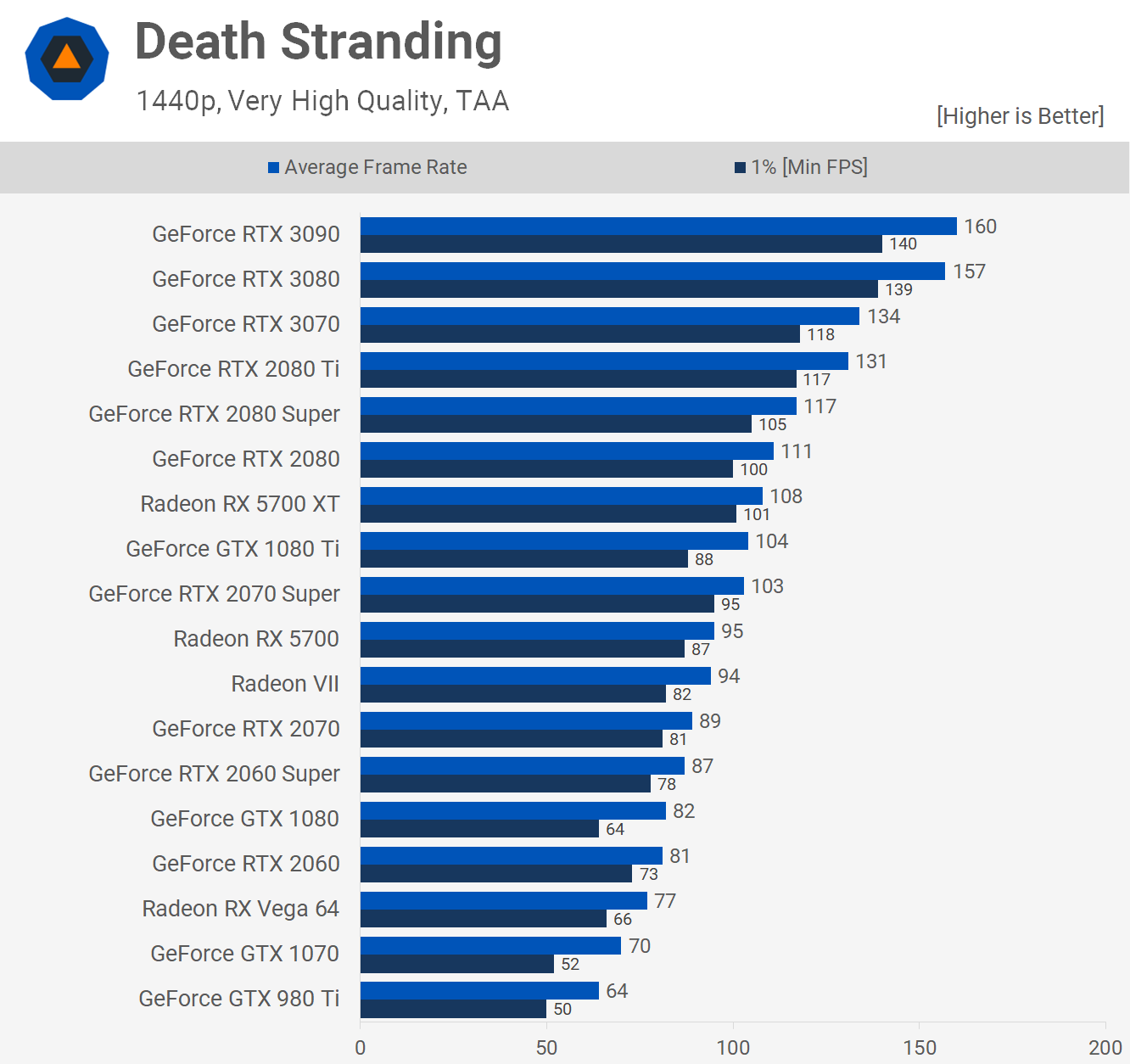
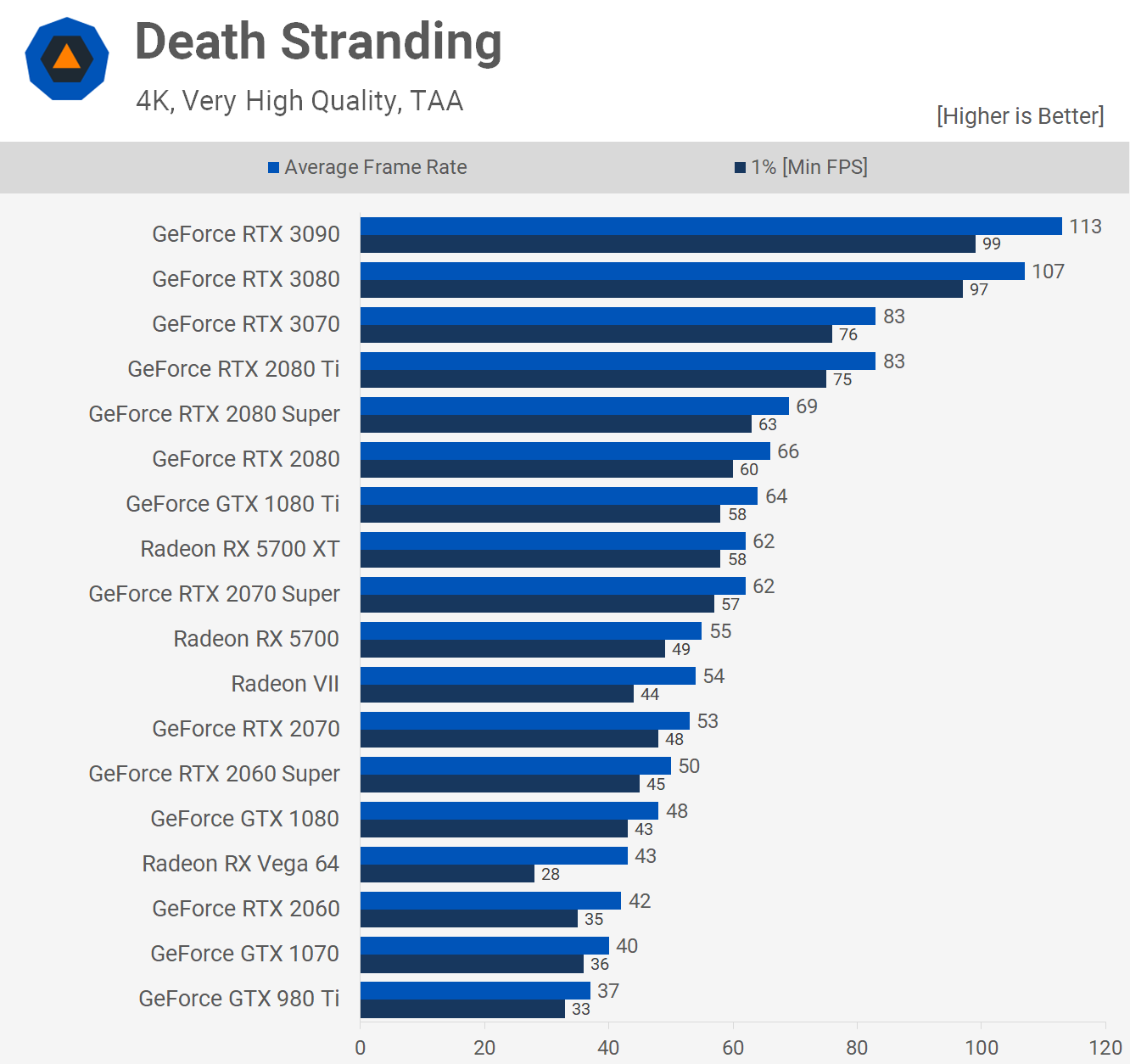
Even at 4K, the RTX 3070 is seen matching the 2080 Ti with 83 fps on average, making it just shy of 30% slower than the 3080. A good overall result for a GPU expected to cost just $500.
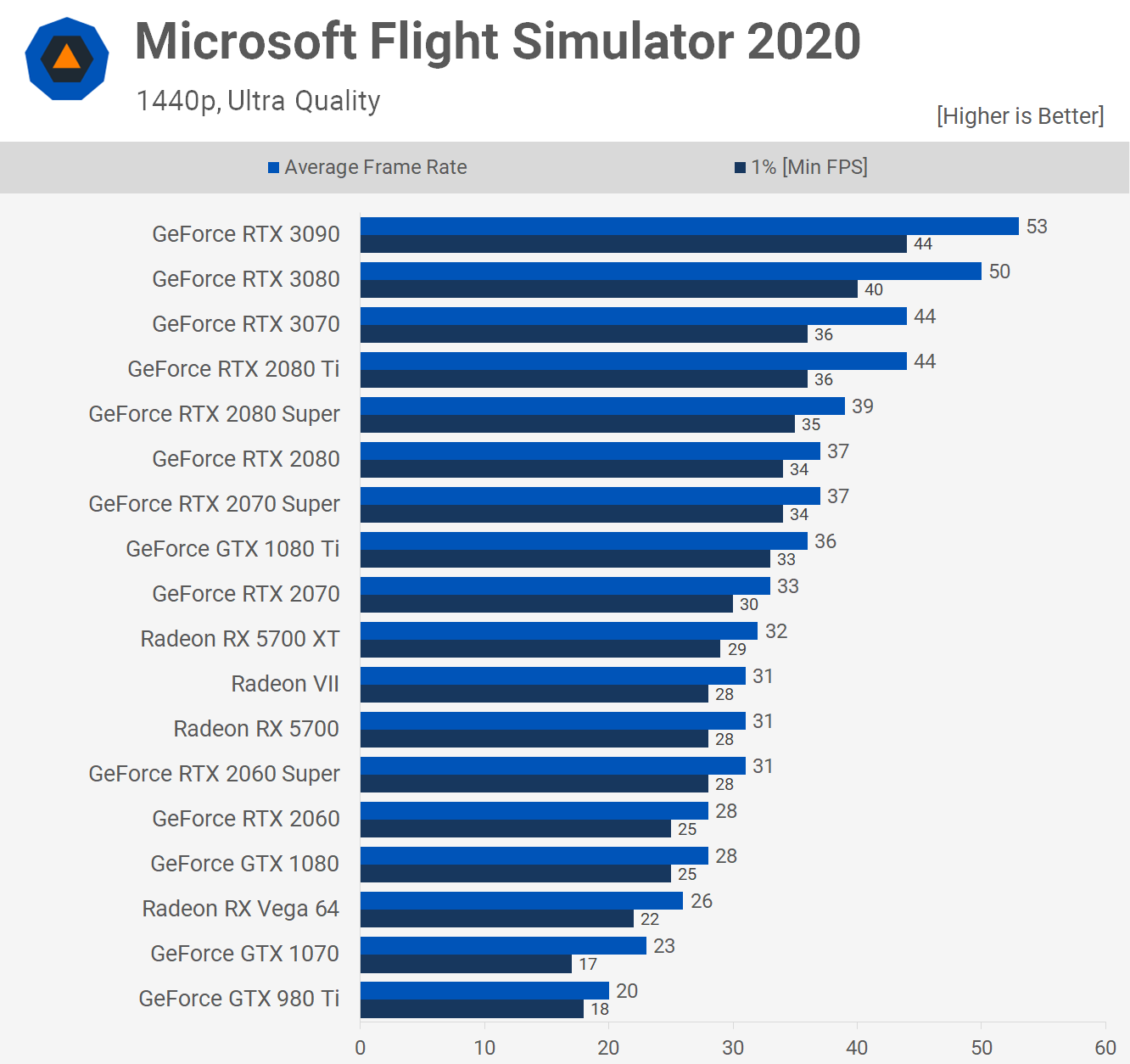
Microsoft Flight Simulator 2020 has the RTX 3070 matching exactly the formerly super-high-end 2080 Ti at 1440p.
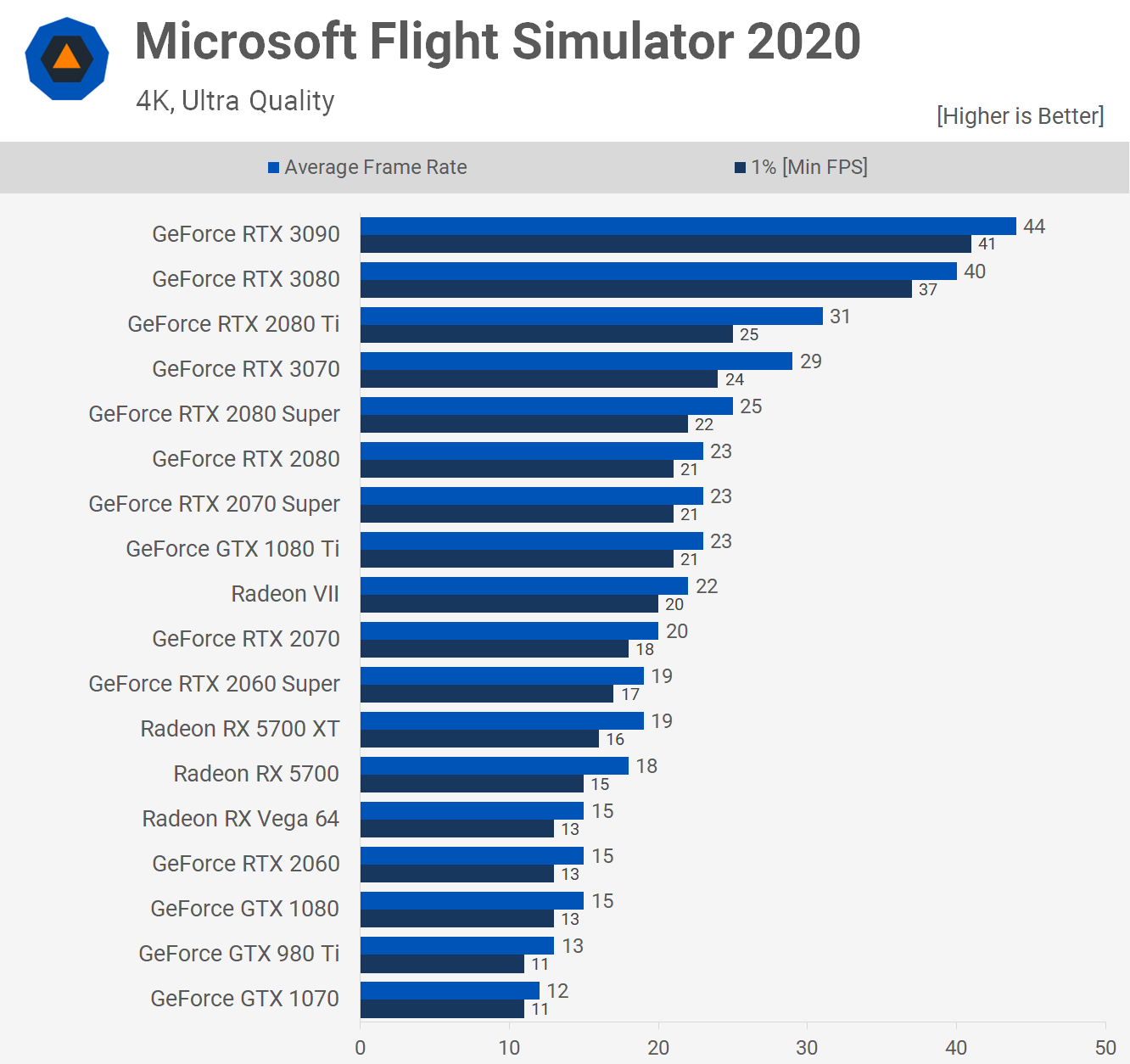
The 3070 does drop off a little at 4K, likely due to only having 8GB of VRAM. The performance hit isn't massive but Flight Simulator 2020 will be pushing beyond the 8GB capacity with the ultra quality settings at 4K and as a result the RTX 3070 pays a small performance penalty.
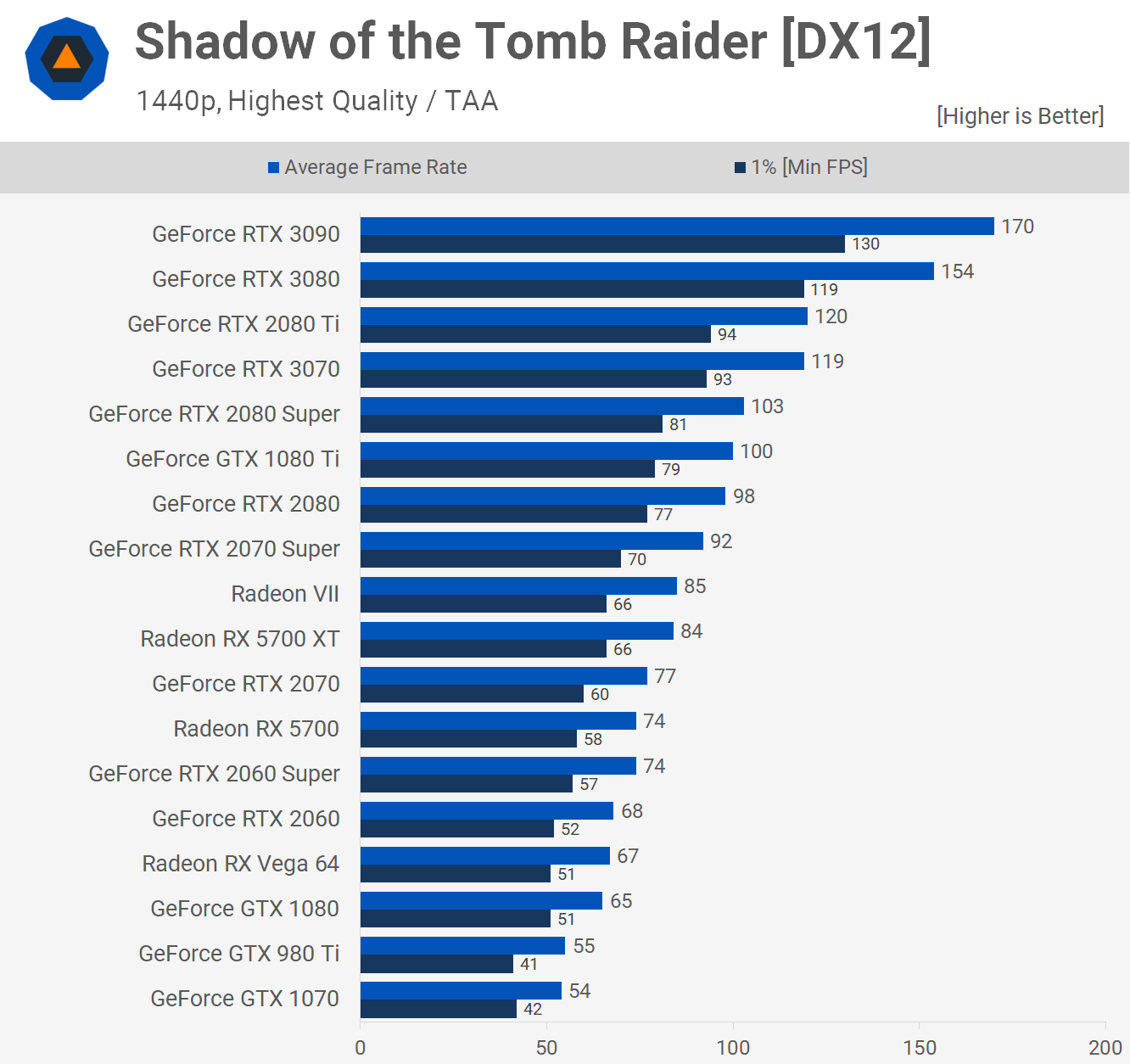
We're starting to sense a trend here. Very similar performance to the 2080 Ti at 1440p, this time in Shadow of the Tomb Raider. That means we're looking at a ~30% performance increase from Nvidia at the $500 price point when compared to the 2070 Super and 55% from the vanilla 2070.
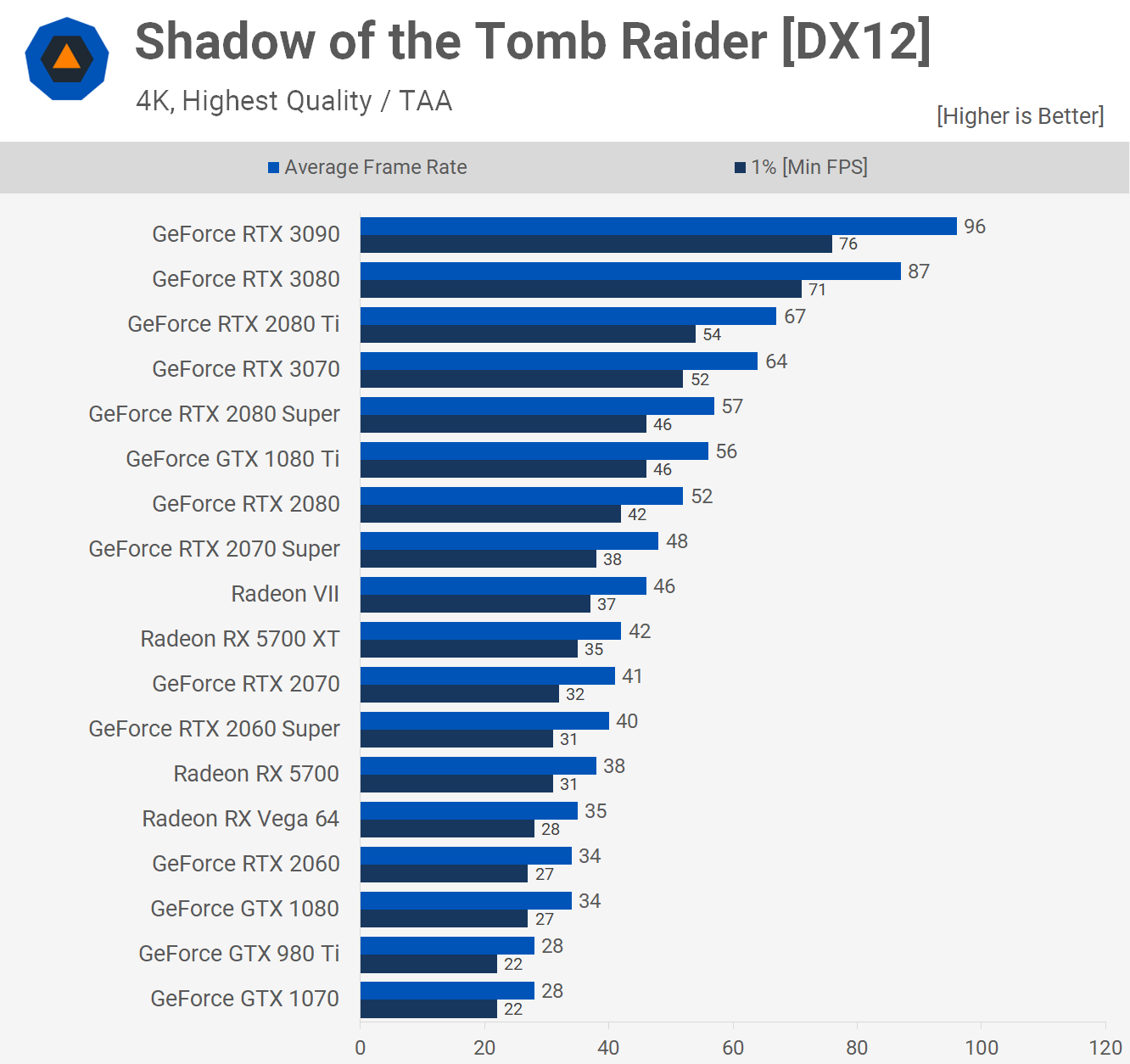
The 3070 is at a disadvantage at 4K, here VRAM usage hits up around 7.5 - 8GB, so it's possible we're on the edge of VRAM capacity limitation, or the tiny performance hit could be due to memory bandwidth, either way the 3070 is only a few frames down on the 2080 Ti.

Tom Clancy's Rainbow Six Siege makes heavy use of compute and this hands the Ampere architecture an advantage. It's not a huge boost over Turing but it does help, as a result the RTX 3070 is 5% faster than the 2080 Ti at 1440p, and 44% faster than the 2070 Super.
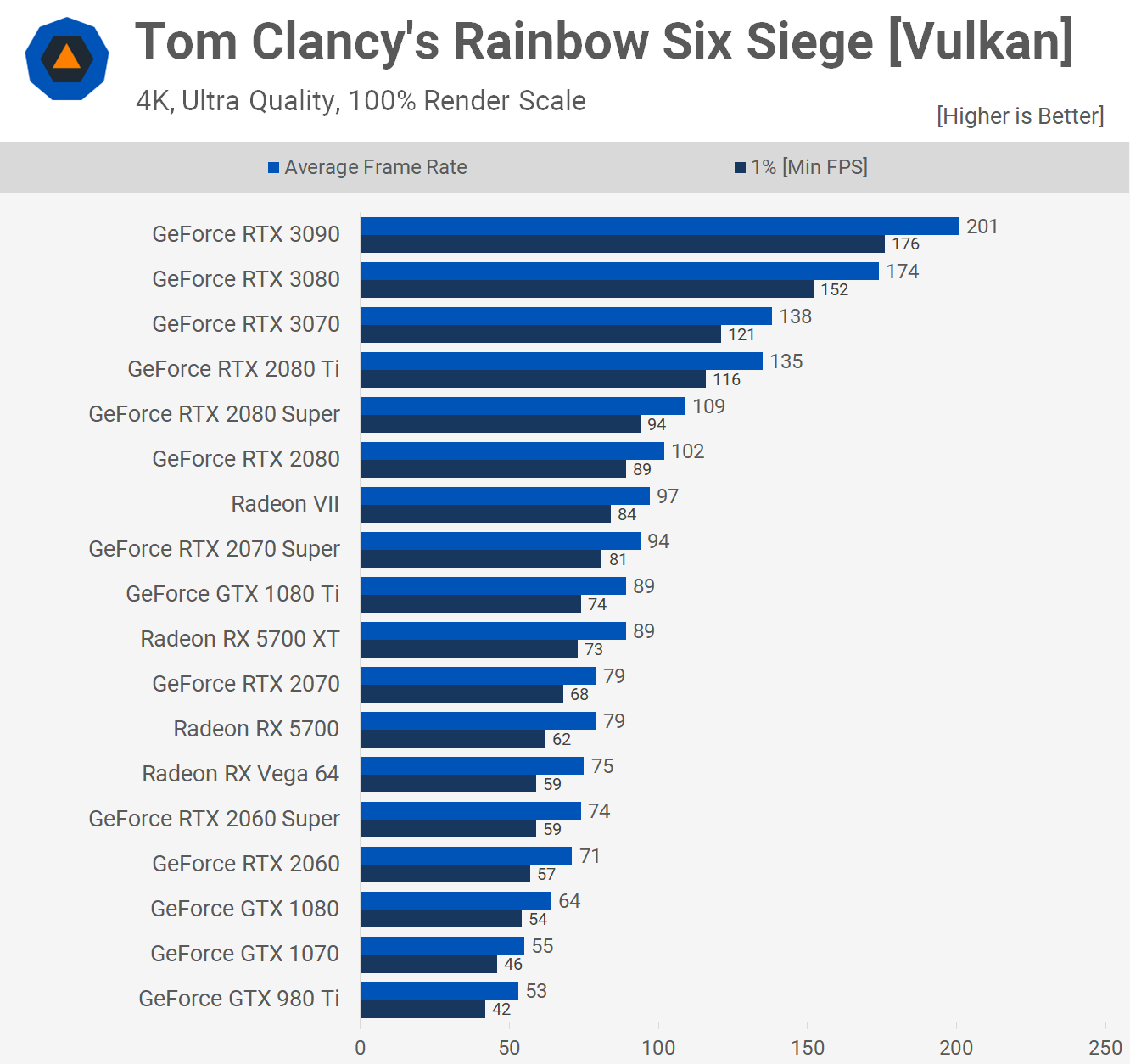
The 3070 also remained strong at 4K, edging out the 2080 Ti by a few frames, making it 21% slower than the 3080 but 47% faster than the 2070 Super.
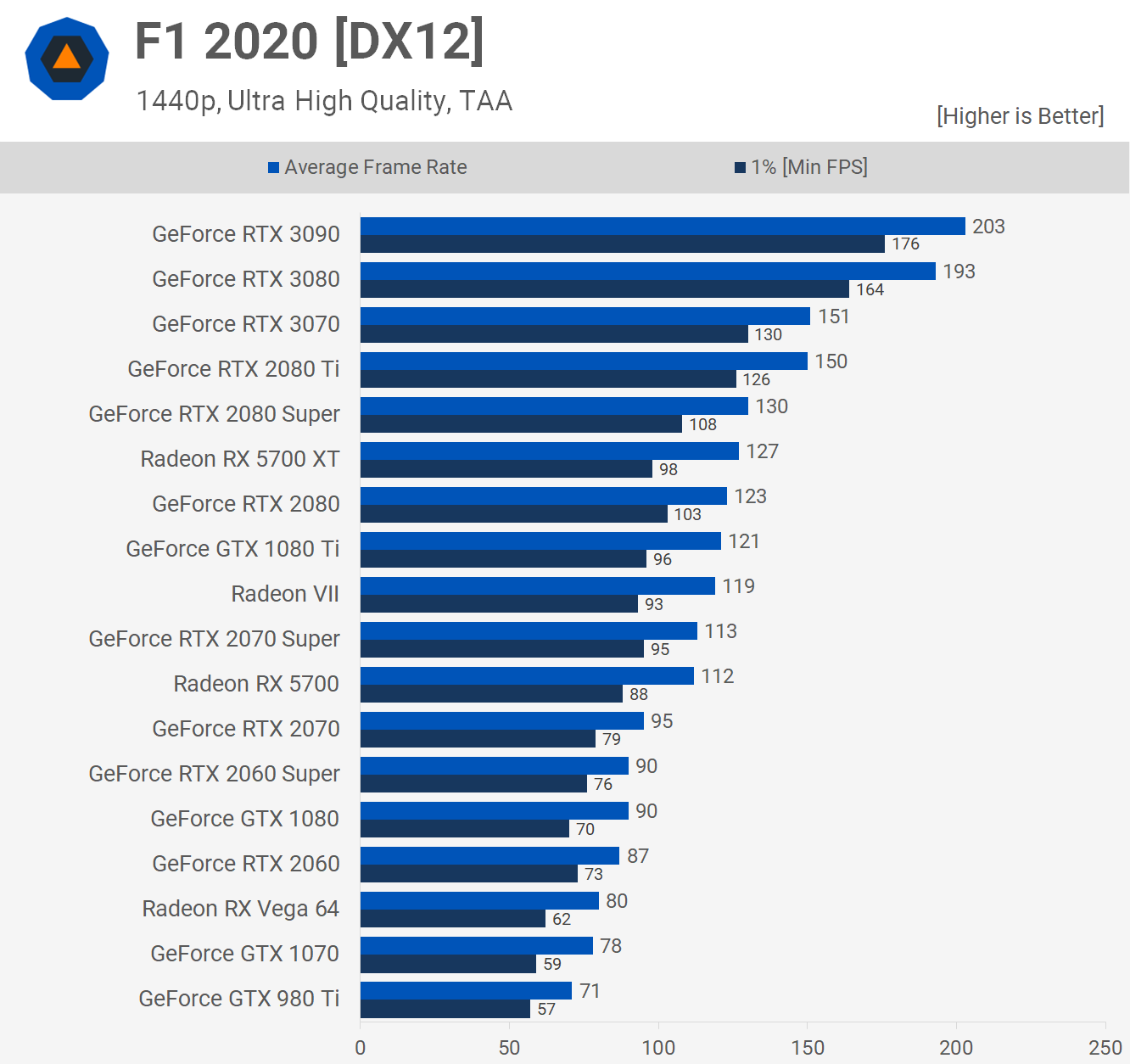
Moving on to F1 2020, again we're looking at 2080 Ti-like performance from the 3070, making it 34% faster than the 2070 Super, or 19% faster than the Radeon 5700 XT.
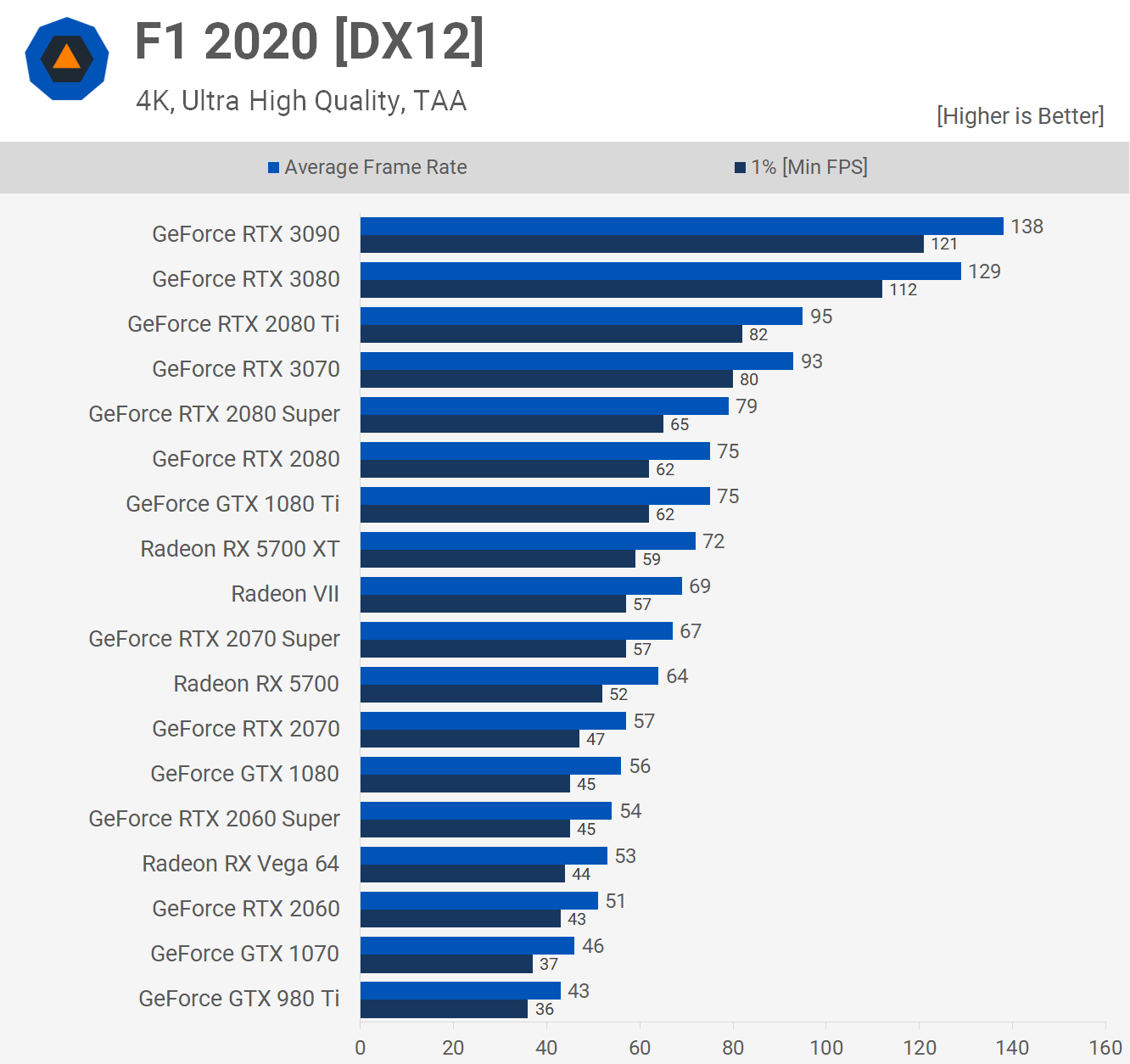
The RTX 3070 slips a few frames behind the 2080 Ti at 4K, but we're talking a mere 2 fps margin, so let's just call it even. That means the new RTX 3070 is almost 40% faster than the 2070 Super, and 30% faster than the 5700 XT.
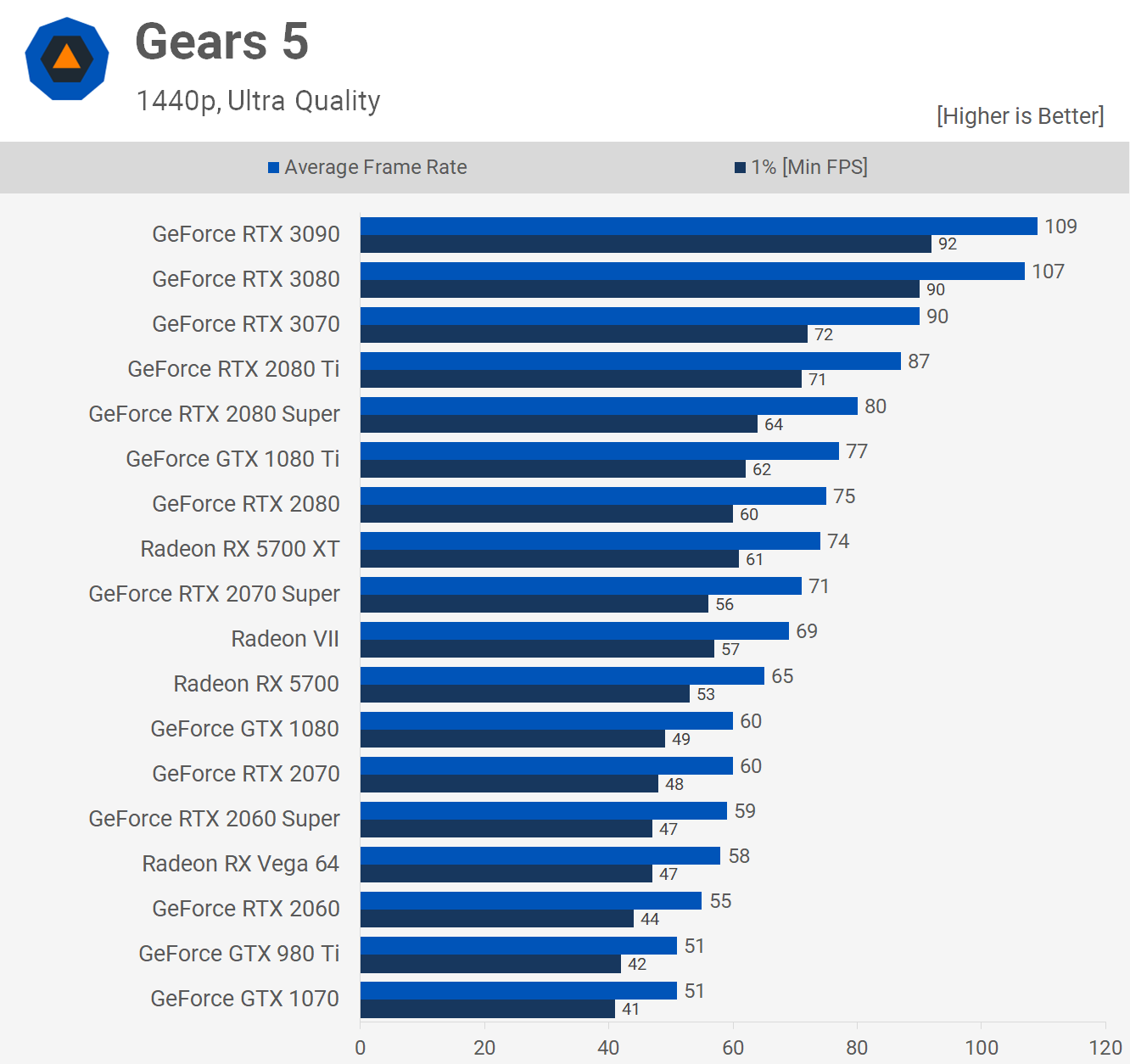
In Gears 5 the RTX 3070 matches and very slightly outdoes the 2080 Ti, though it's basically the same performance. A smaller 27% boost over the 2070 Super is seen, and even less over the 5700 XT.
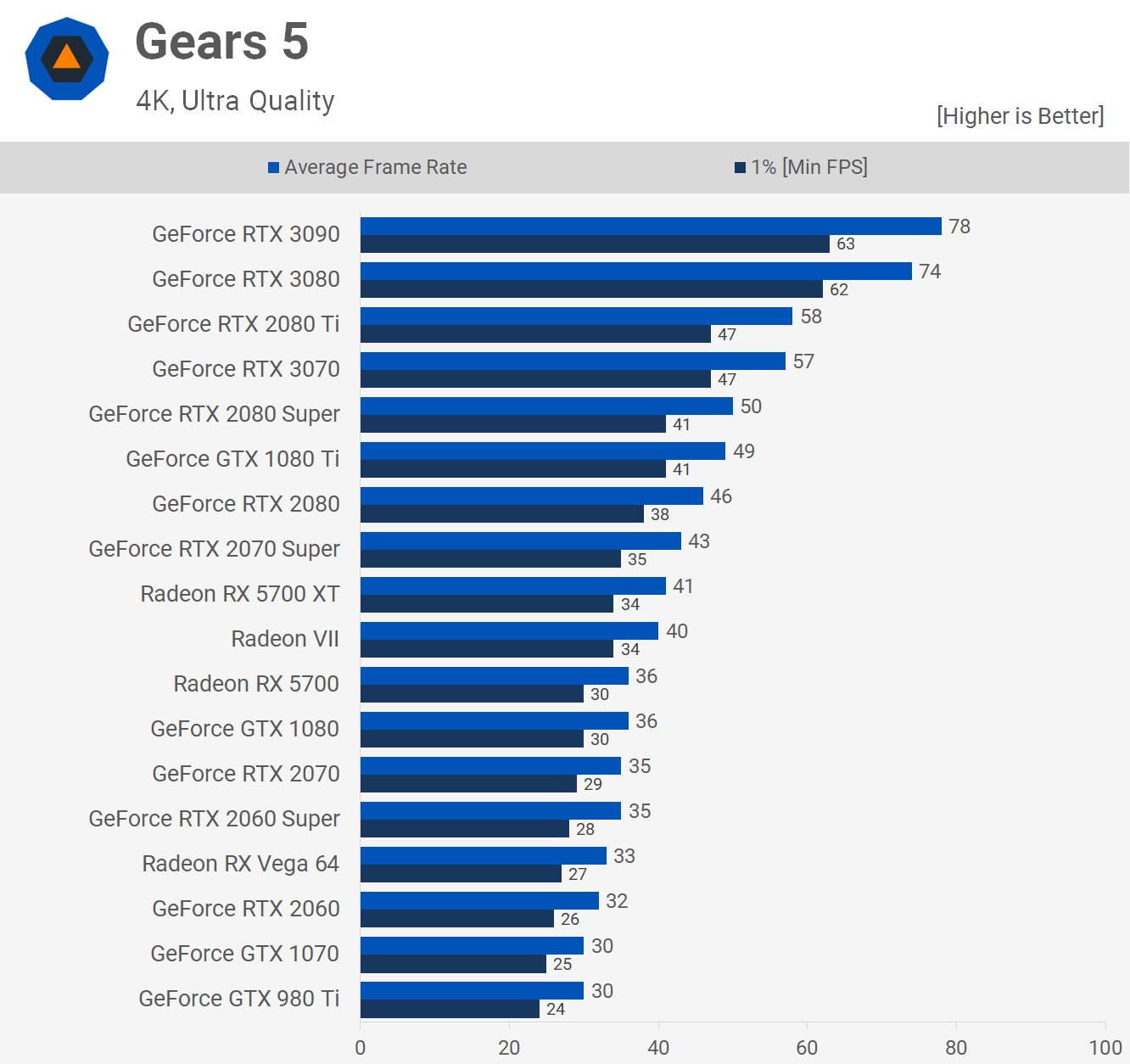
At 4K the RTX 3070 is 33% faster than the 2070 Super and almost 40% faster than the 5700 XT.
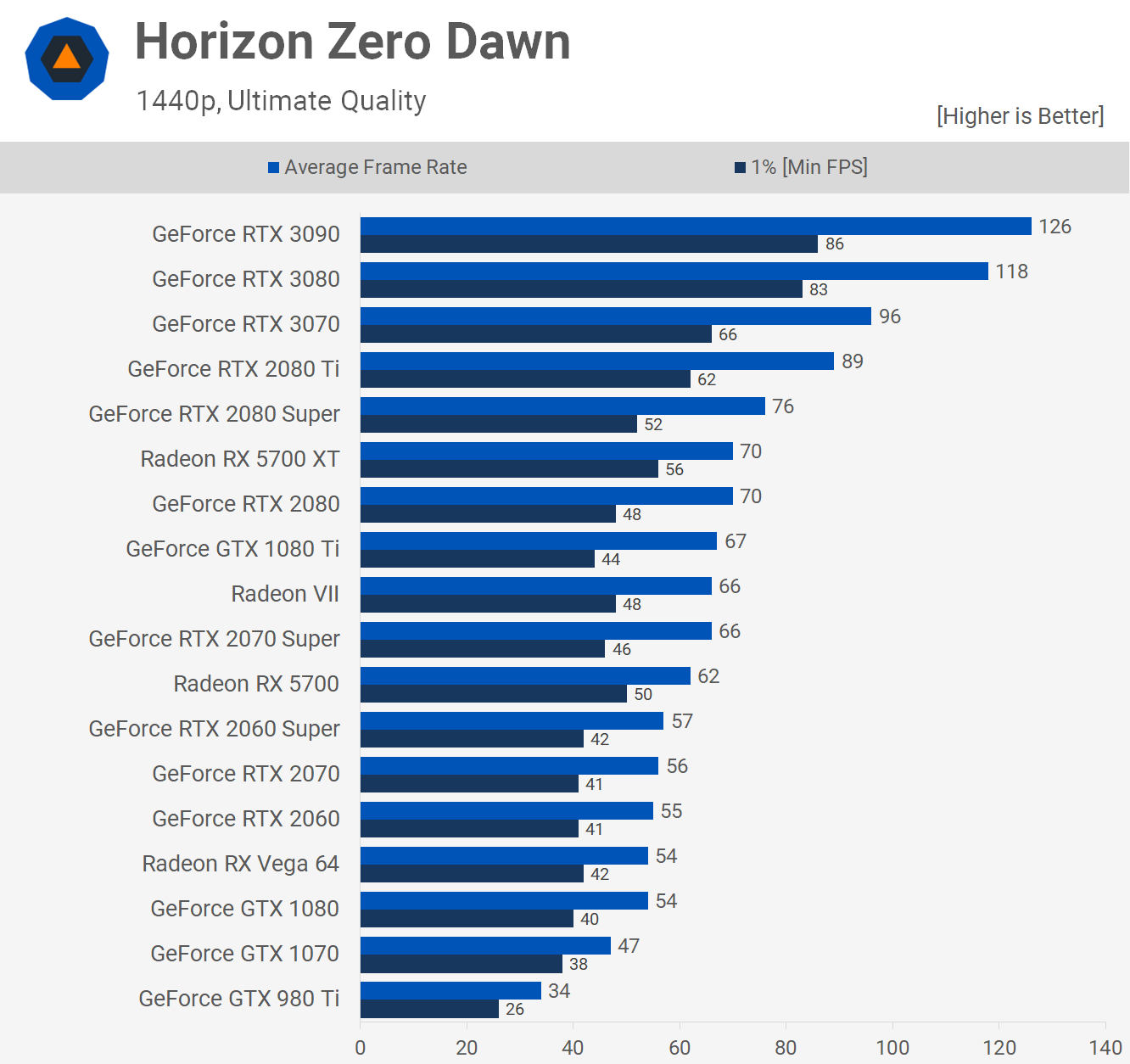
Interestingly, the RTX 3070 was 8% faster than the 2080 Ti at 1440p in Horizon Zero Dawn, delivering 96 fps on average and that made it 45% faster than the 2070 Super and 37% faster than the 5700 XT, so a solid result here.
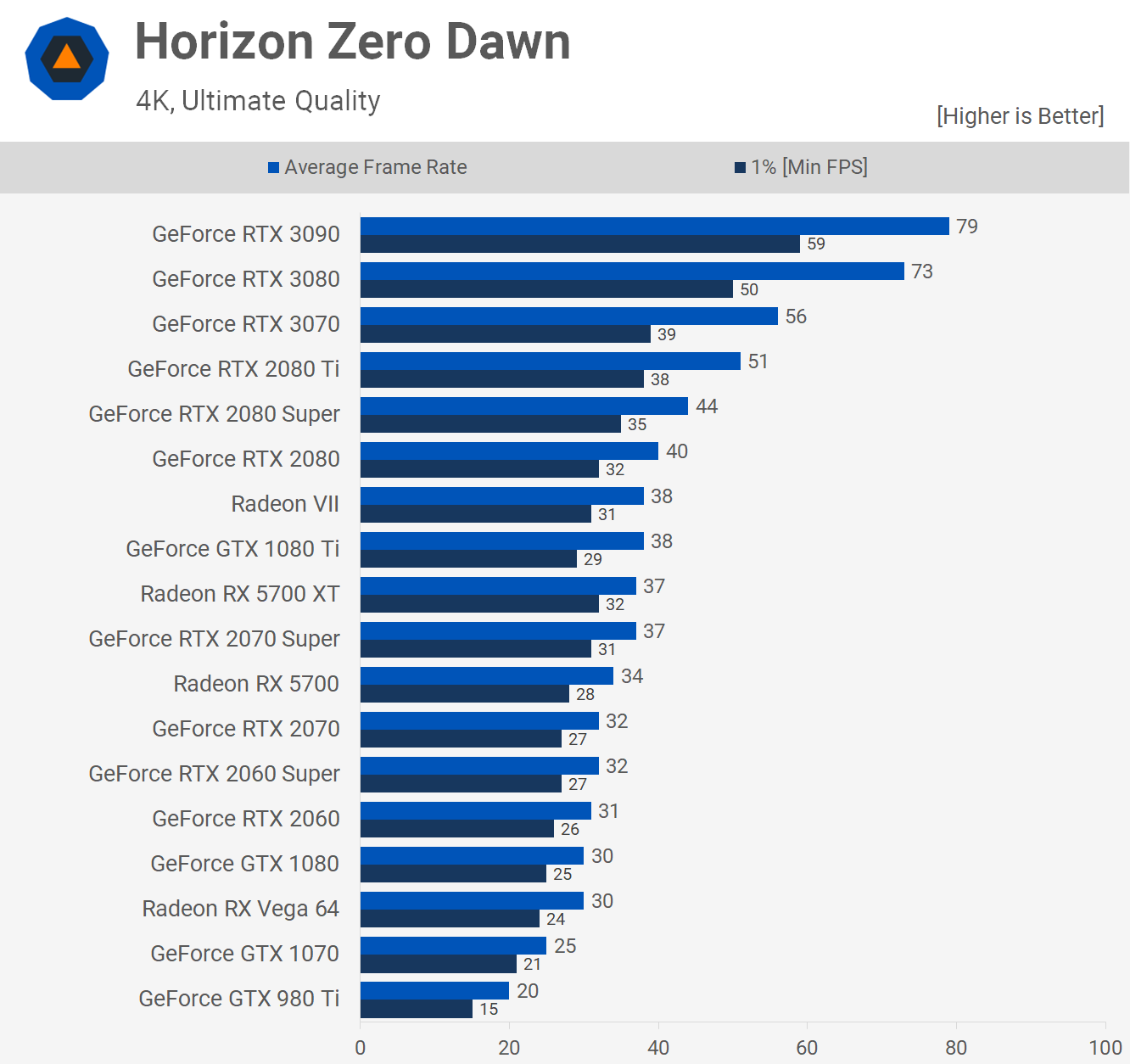
Performance for the 3070 remained very strong at 4K as it was 10% faster than the 2080 Ti and a whopping 51% faster than the 2070 Super.
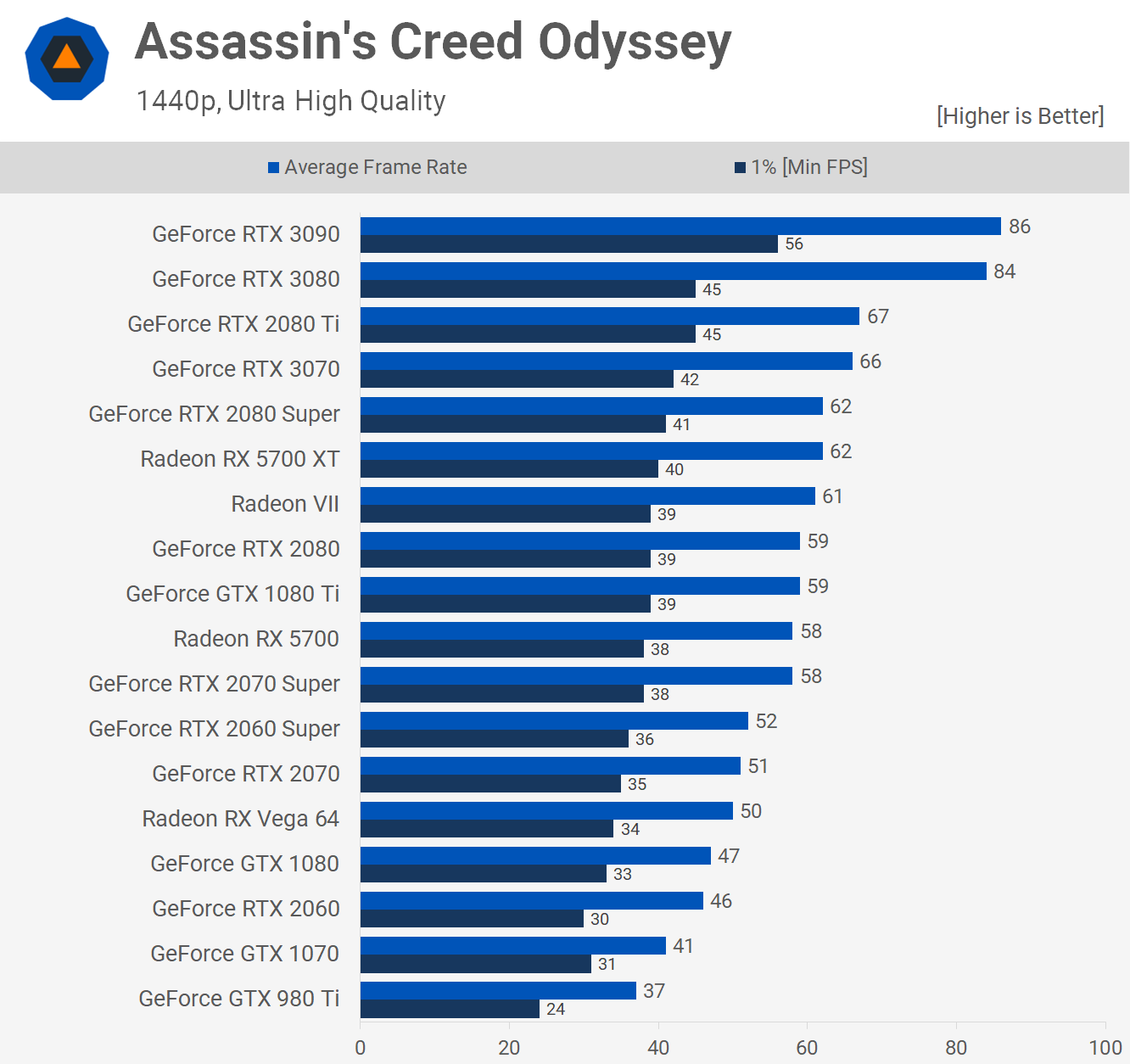
Moving on to Assassin's Creed Odyssey, and you guessed it, 2080 Ti-like performance at 1440p.
The gains over the 2070 Super are weak in this title, at least when using a 3rd-gen Ryzen processor, about a 14% increase.
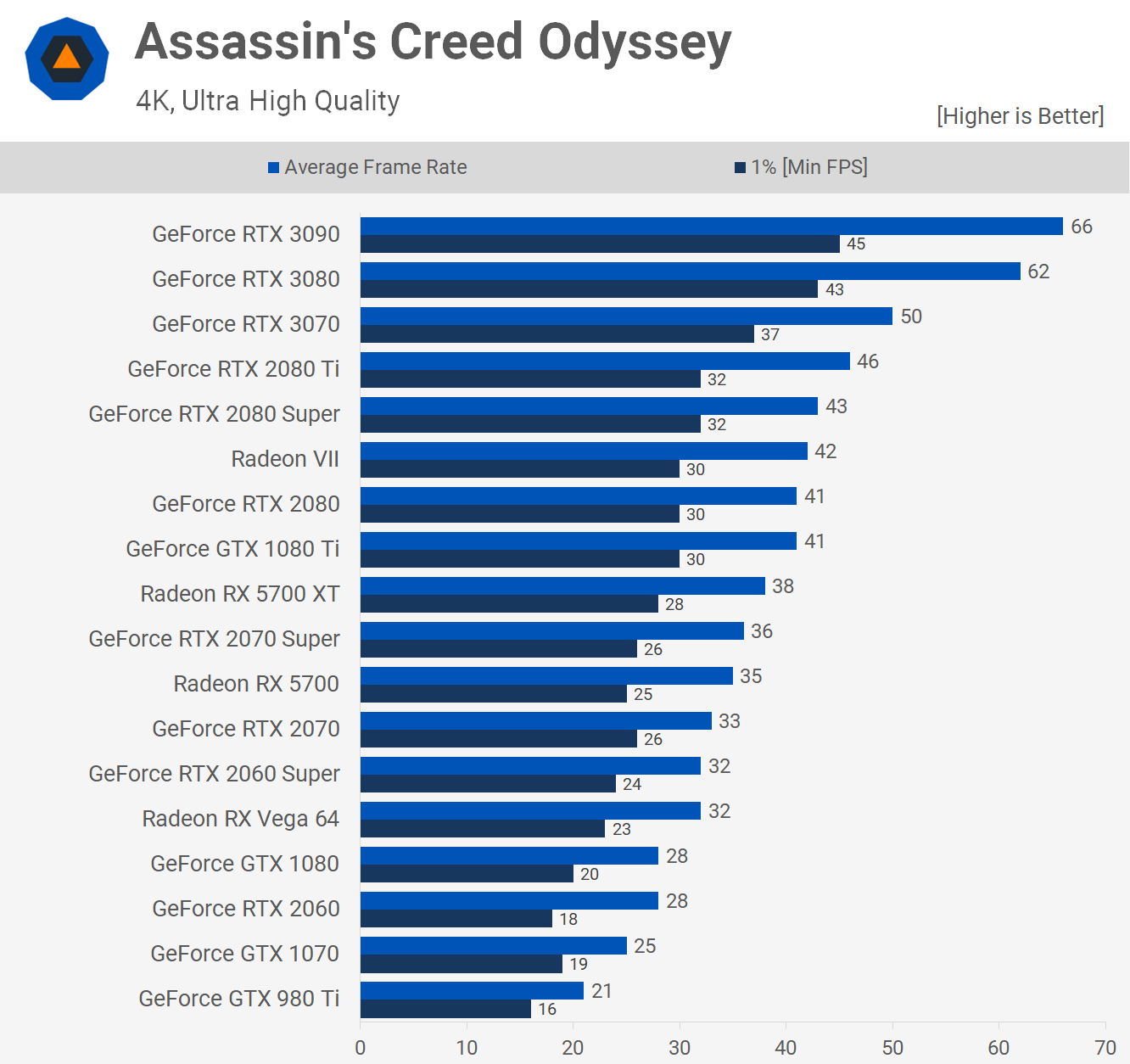
There's no CPU bottleneck at 4K and as a result the 3070 was 39% faster than the 2070 Super and even managed to beat the 2080 Ti by a 9% margin, quite an impressive result.
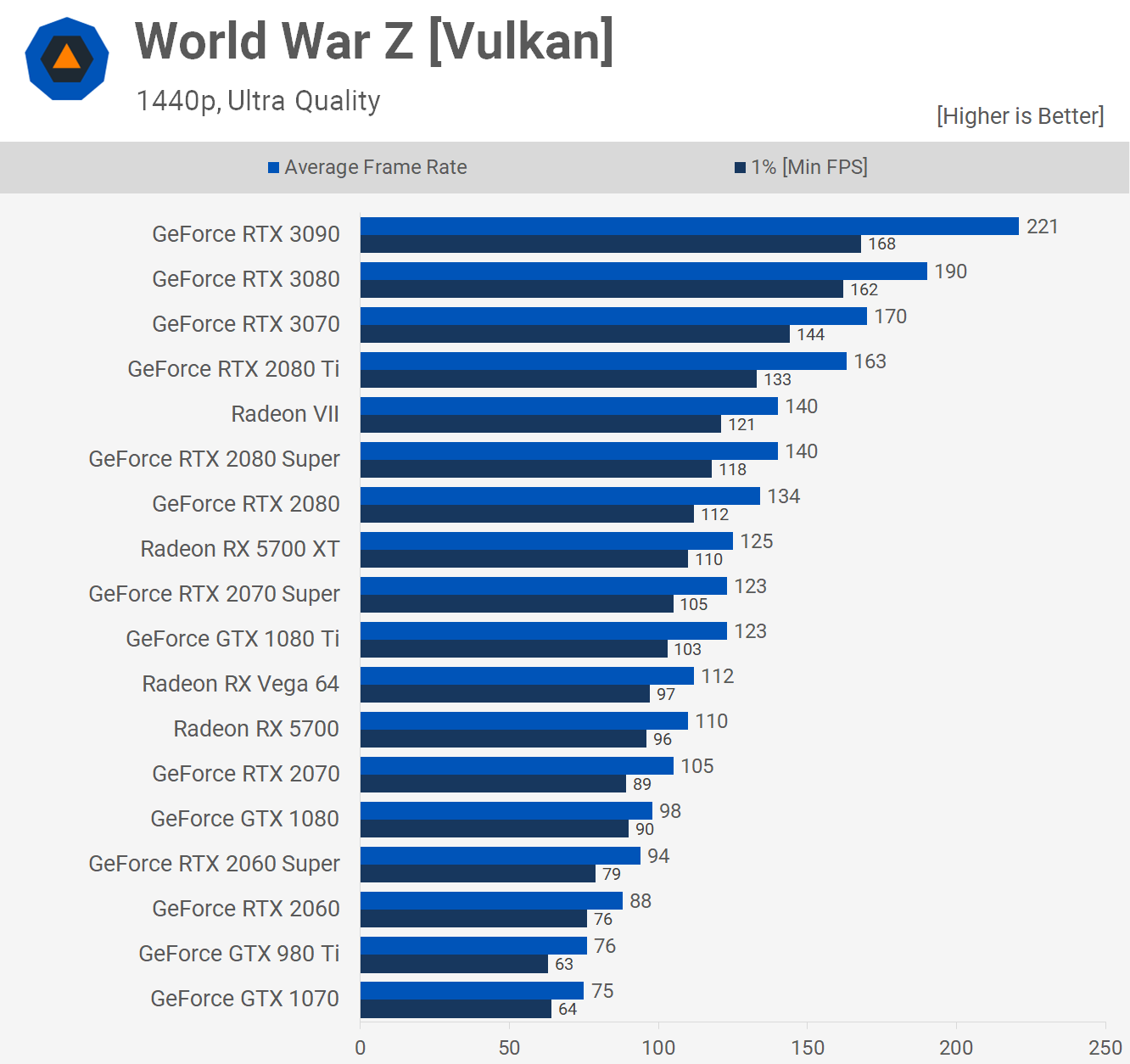
We're seeing a small performance boost over the 2080 Ti at 1440p with 4% more frames on average, though interestingly we did see an 8% increase to the 1% low result. Anyway, that meant the 3070 was 38% faster than the 2070 Super and 36% faster than the 5700 XT.
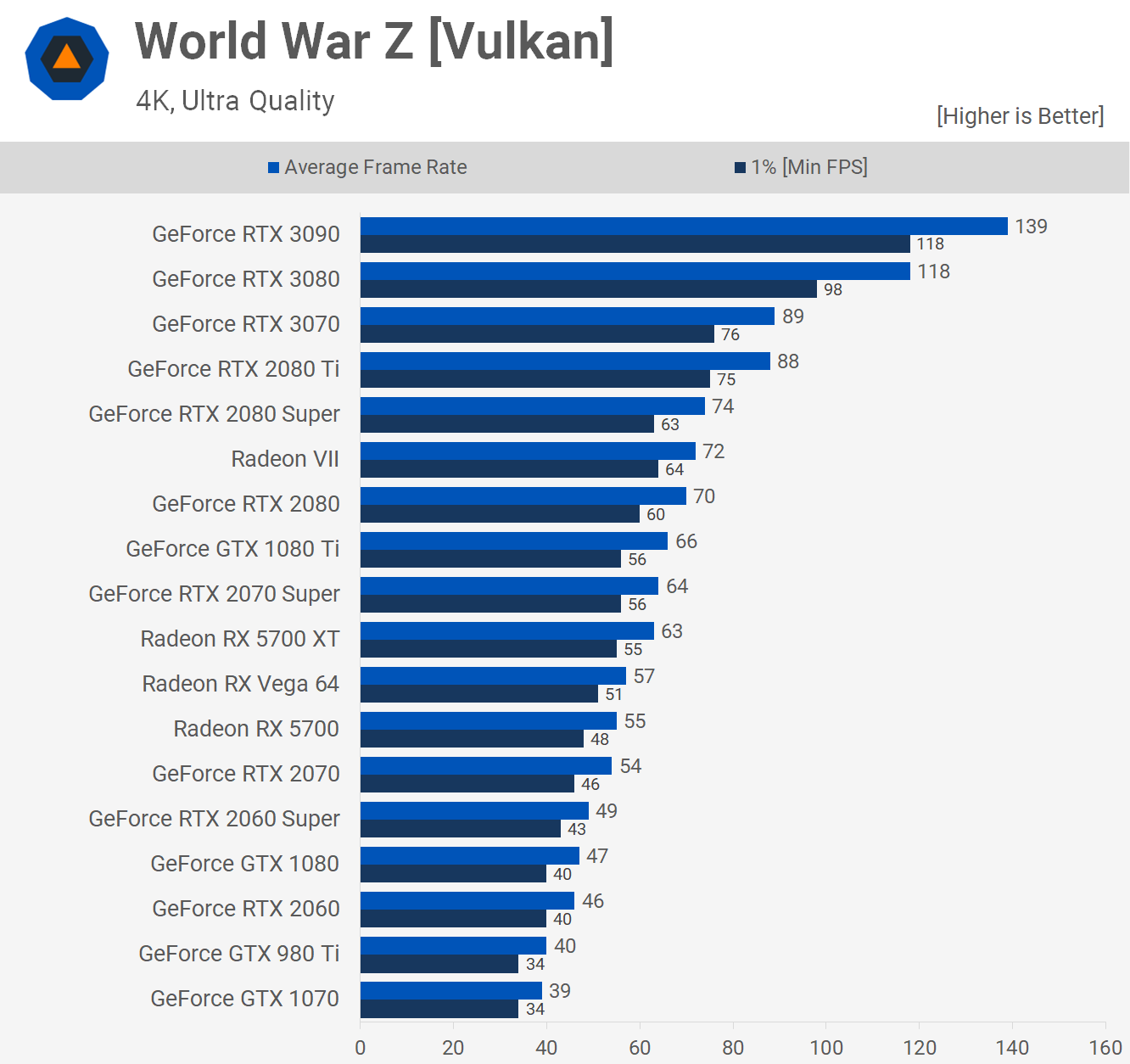
Jumping up to 4K sees the 3070 running just a single frame ahead of the 2080 Ti, so once again we're looking at 2080 Ti-like performance. This meant that while the 3070 was 25% slower than the 3080, it was almost 40% faster than the 2070 Super.
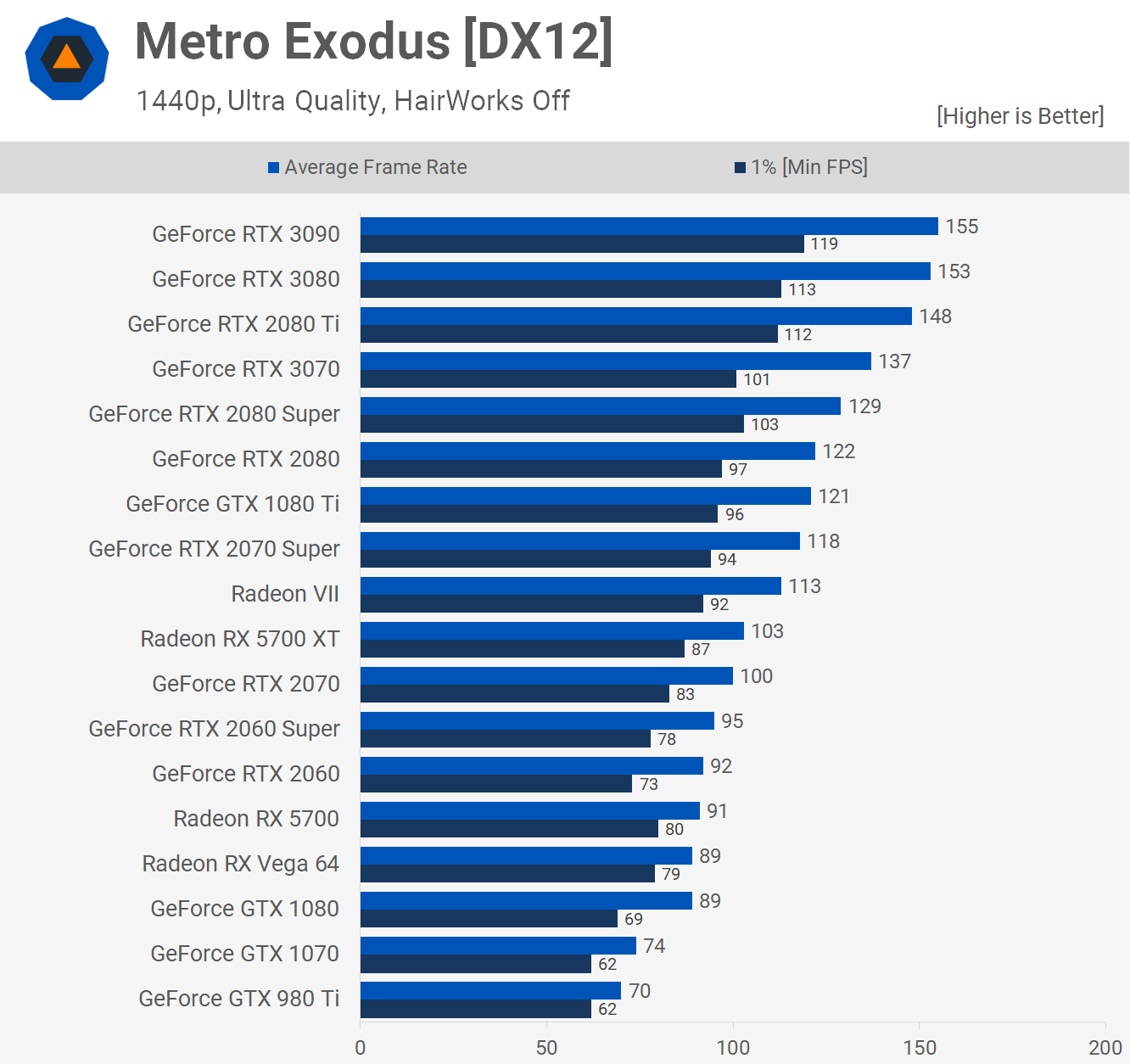
Next up we have Metro Exodus and the results here are a little unexpected as the RTX 3070 trails the 2080 Ti by a 7% margin. We haven't seen a similar result so far, even if the margin is not huge, that means the 3070 is just 16% faster than the 2070 Super at 1440p.
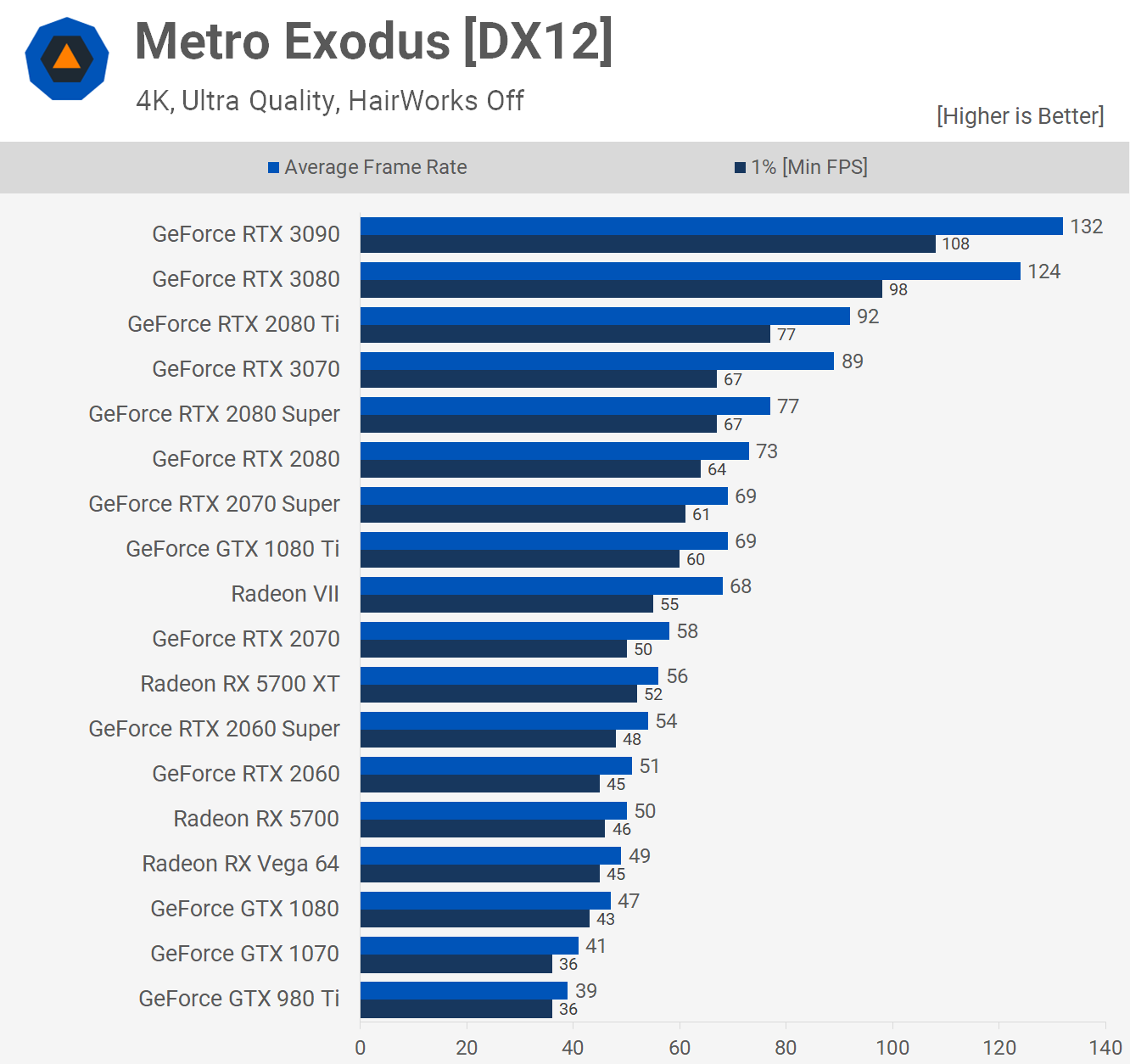
The 4K data follows the same pattern where the RTX 3070 gets close to the average framerate of the 2080 Ti, but the 1% low performance only matches the 2080 Super.
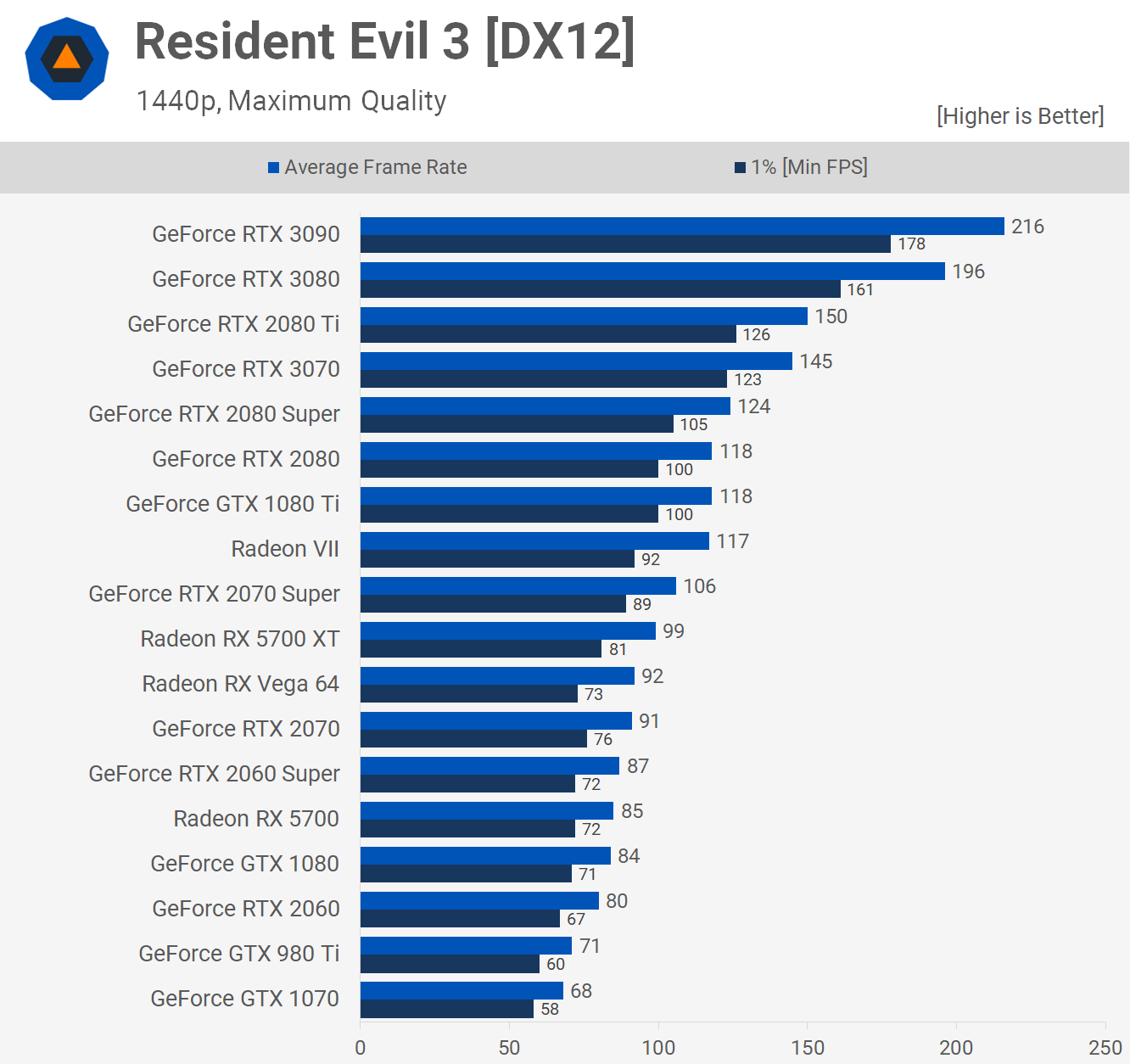
The Resident Evil 3 results are more what we've come to expect, the RTX 3070 is seen delivering performance at the 2080 Ti level.
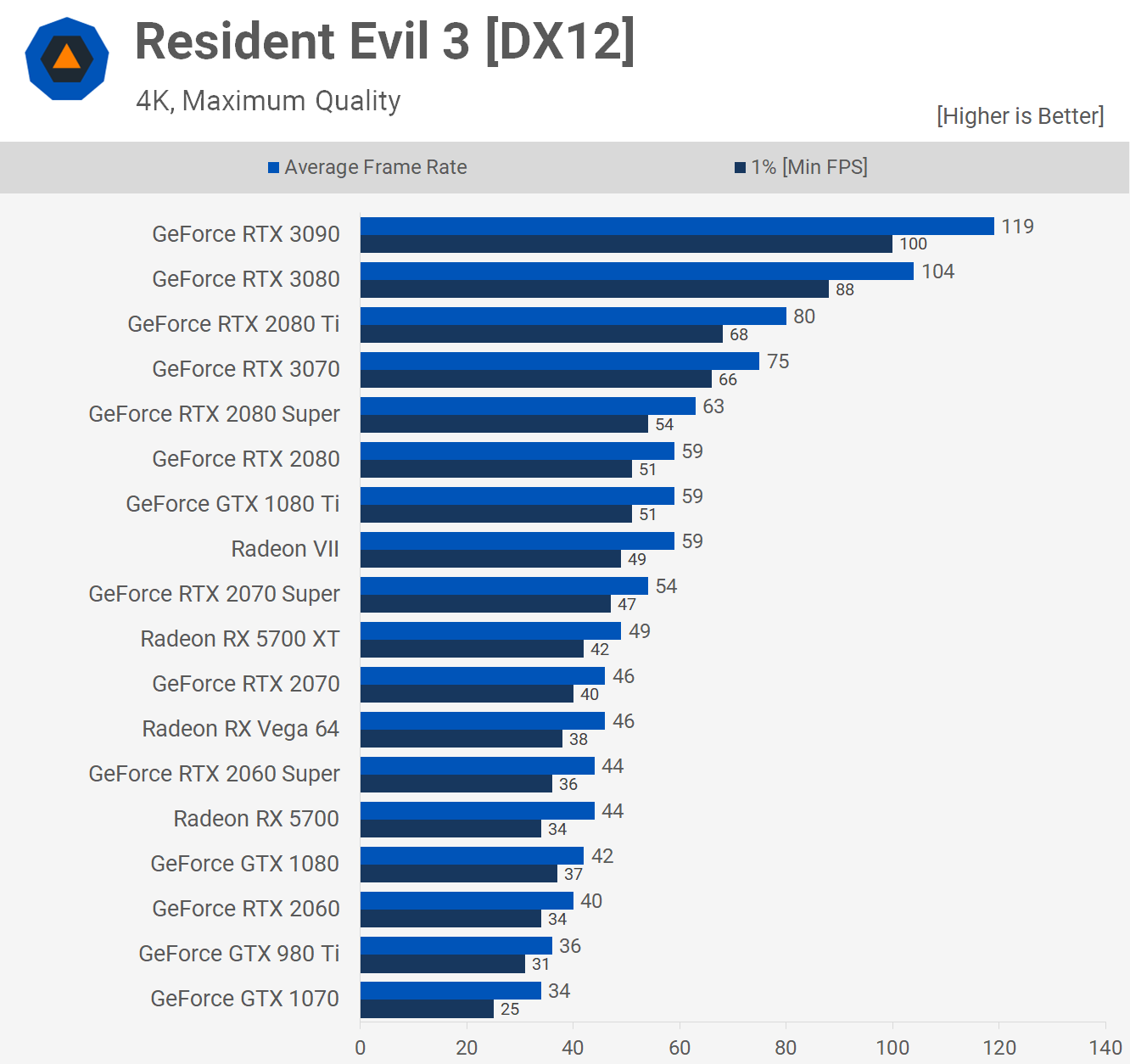
The RTX 3070 drops off a little further at 4K, here it was 6% slower than the 2080 Ti, but that's still far from a terrible result and it was 39% faster than the 2070 Super.
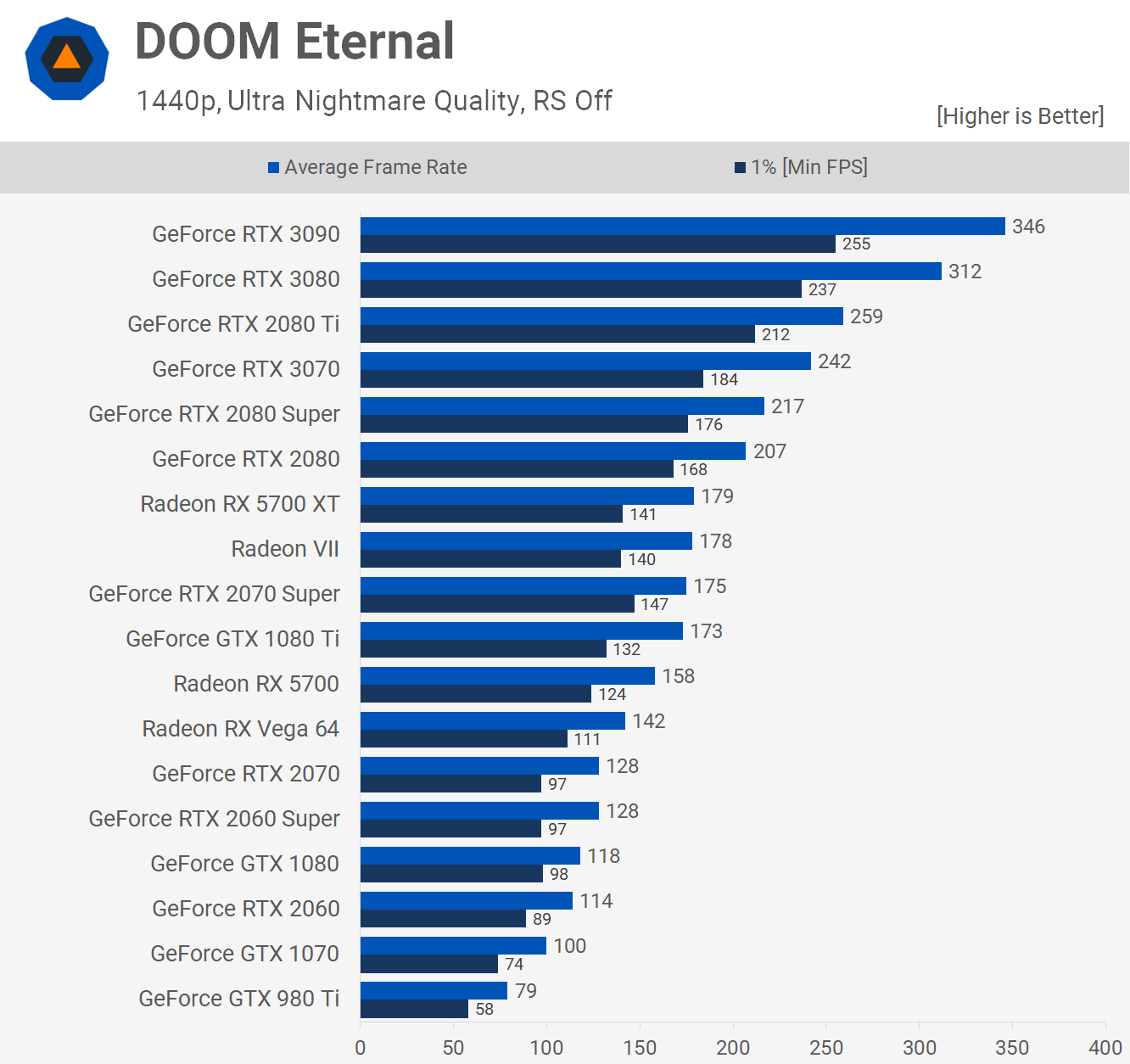
The Doom Eternal results sees the 3070 offering 7% slower performance than the 2080 Ti at 1440p, which is a little surprising to see. We're still talking about a ~40% performance boost over the 2070 Super and 35% over the Radeon 5700 XT.
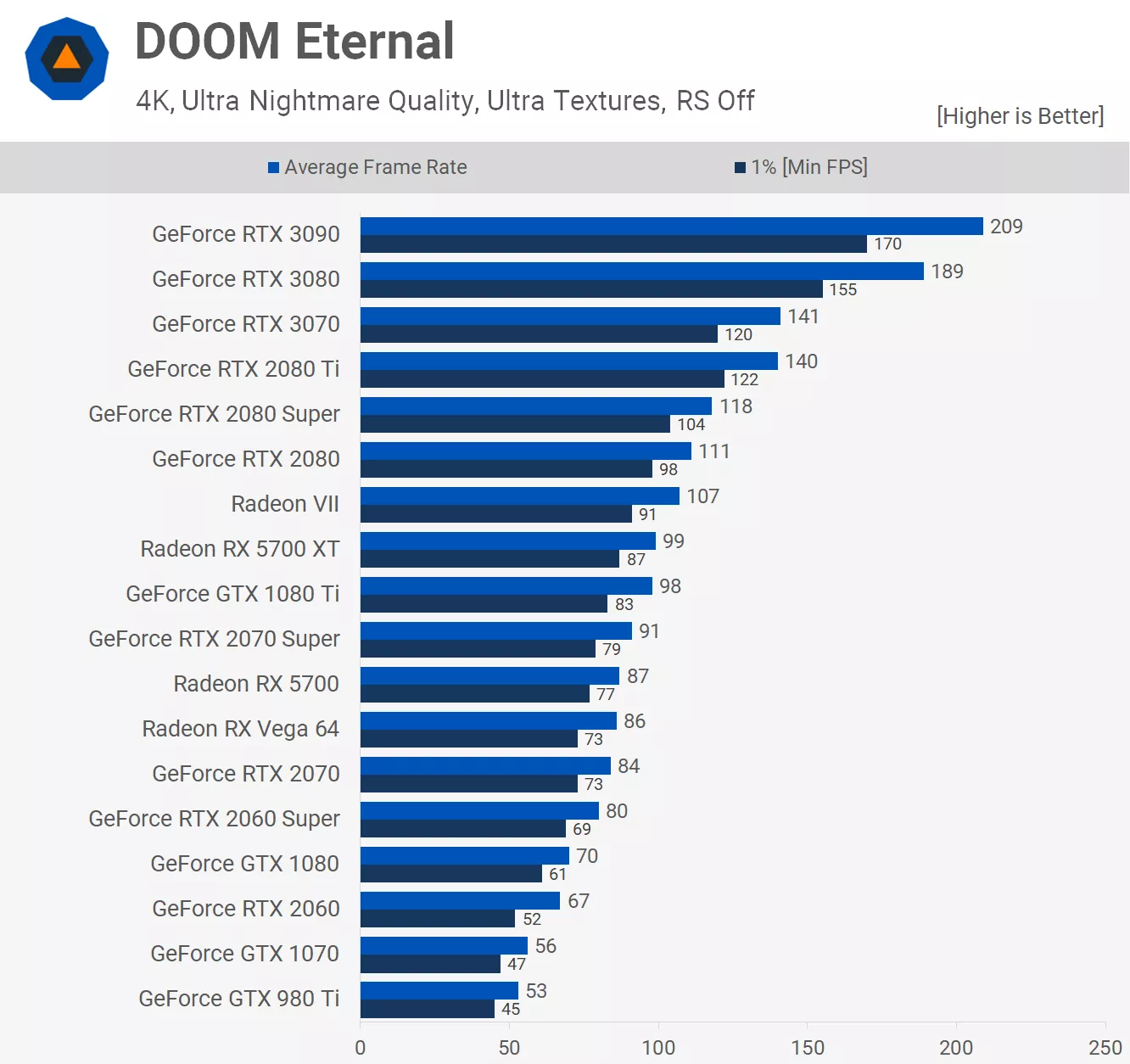
Now at 4K, using the ultra nightmare textures which call for 9GB of VRAM we find that the RTX 3070 falls further behind the 2080 Ti, trailing by a 14% margin. But other 8GB graphics cards like the RTX 2070 Super also suffer here and as a result the higher memory bandwidth of the RTX 3070 plays a more crucial role, allowing it to beat the 2070 Super by a 52% margin.
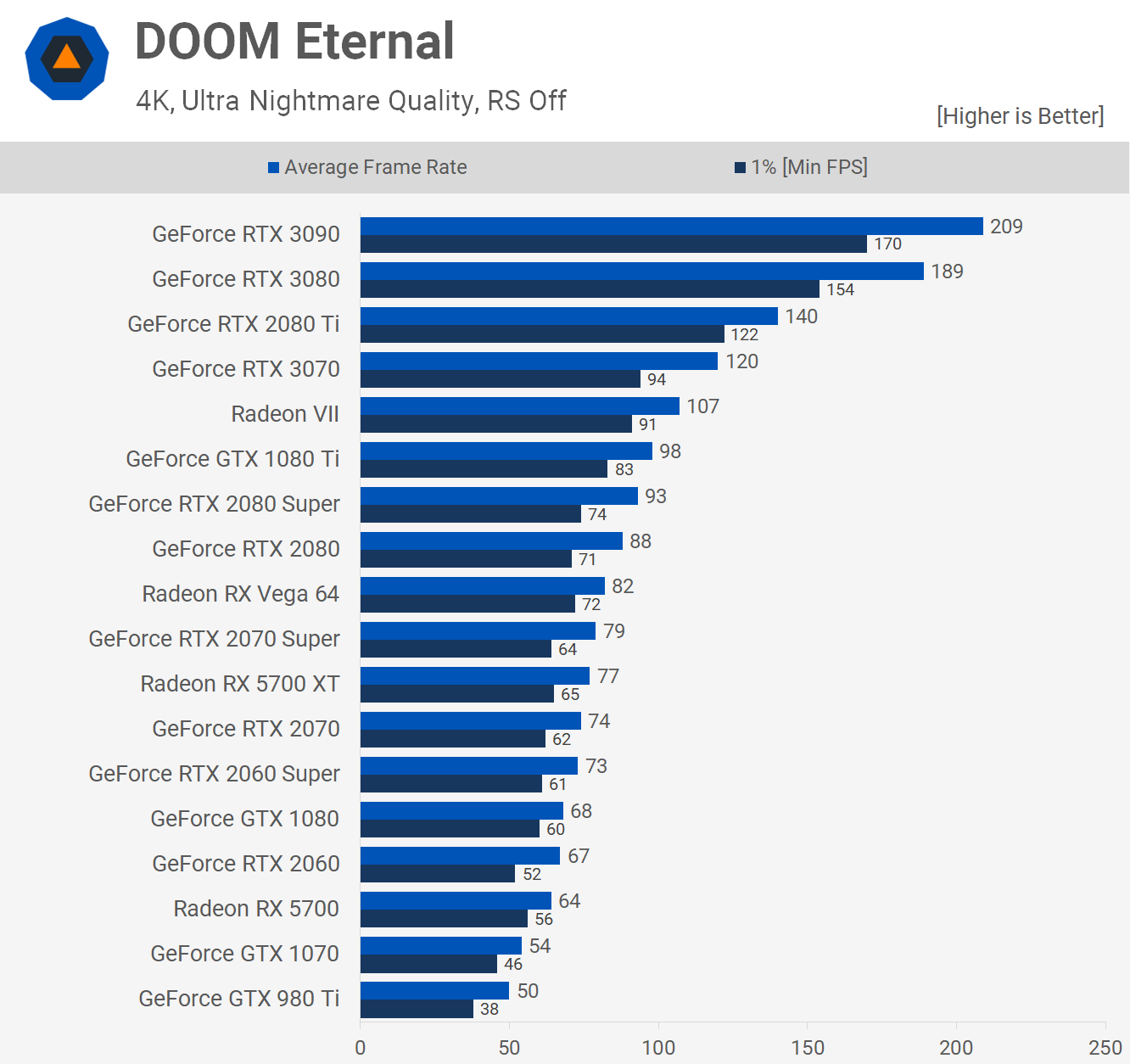
We also tested with lower texture quality (down to 'ultra') which requires 7GB of VRAM. The 3070 is able to match the 2080 Ti in this scenario, rendering 141 fps on average.
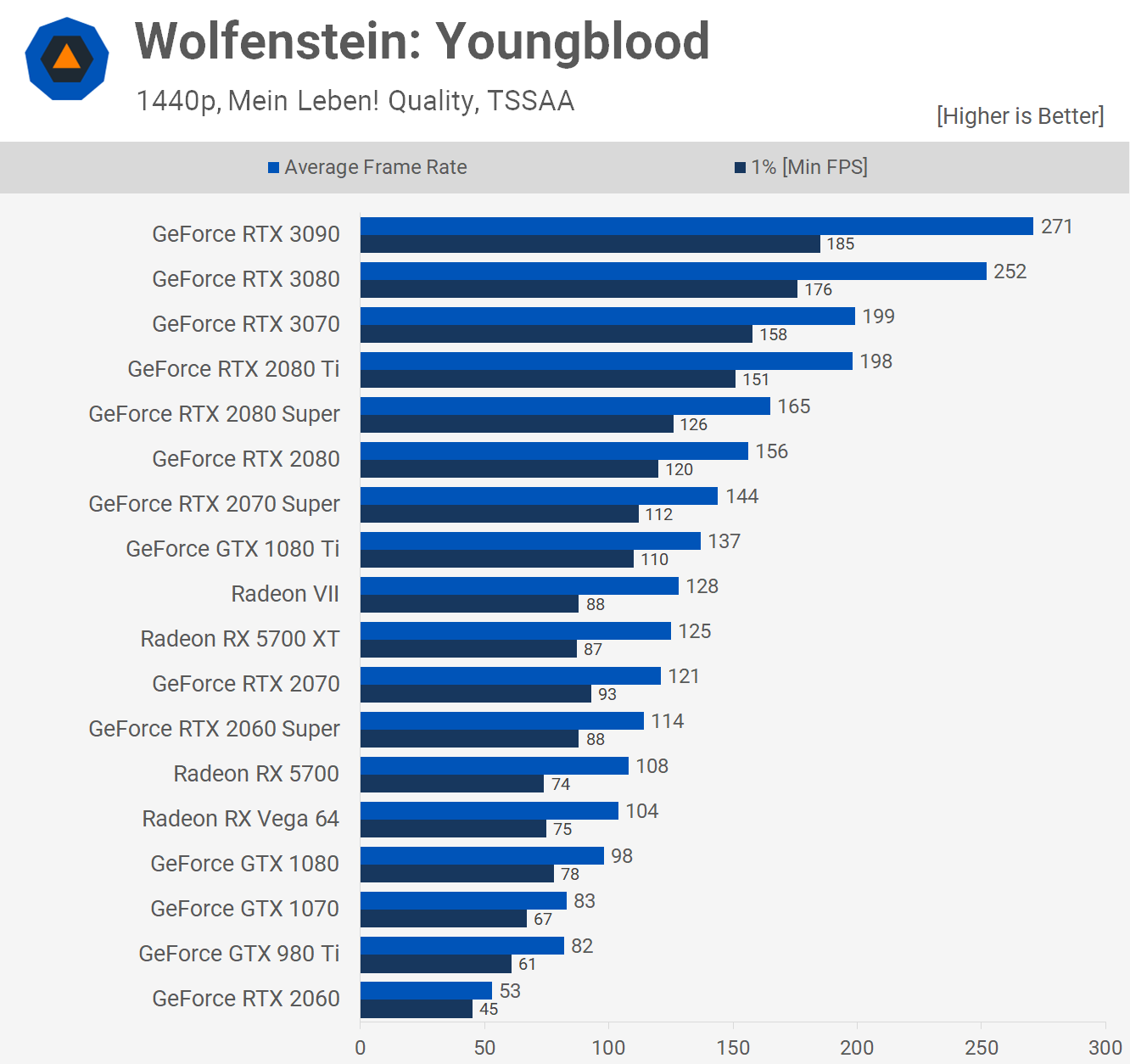
In Wolfenstein: Youngblood we're seeing the 3070 match the 2080 Ti to a T, making it 21% slower than the RTX 3080 and 38% faster than the 2070 Super.
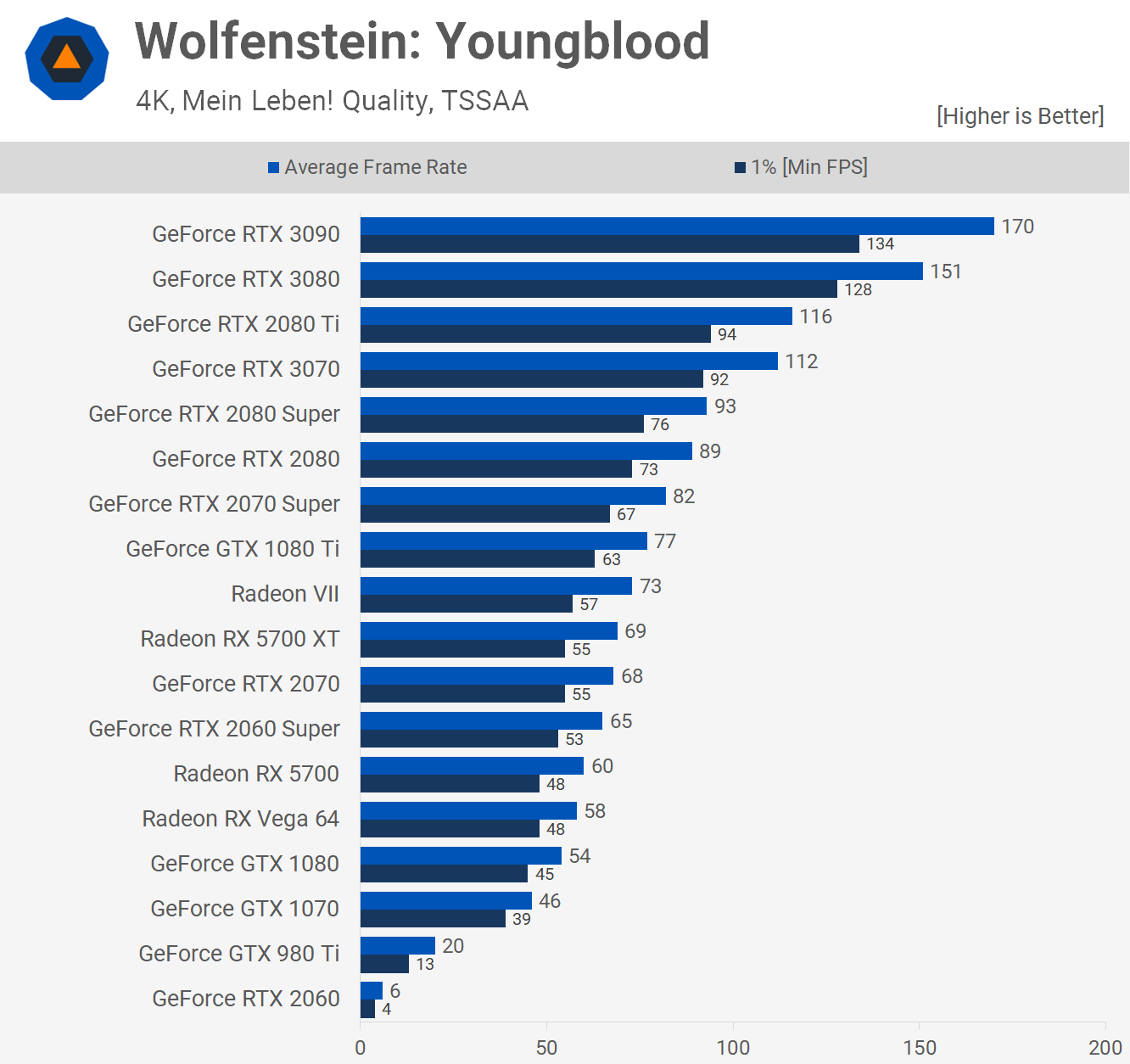
Then at 4K the RTX 3070 was 3% slower than the 2080 Ti and 26% slower than the 3080, but also 37% faster than the 2070 Super.


Last up, we have Hitman 2 and you guessed it, 2080 Ti-like performance at 1440p. We do see the 3070 drop off slightly at 4K, but it was just 4% slower than the old 2080 Ti flagship and 55% faster than the 2070 Super.
Performance Summary
All those benchmark runs later, we think it's safe to say the RTX 3070 is very much a match for the RTX 2080 Ti as promised by Nvidia. Here's a look at the average data across our 14 game sample in both resolutions.
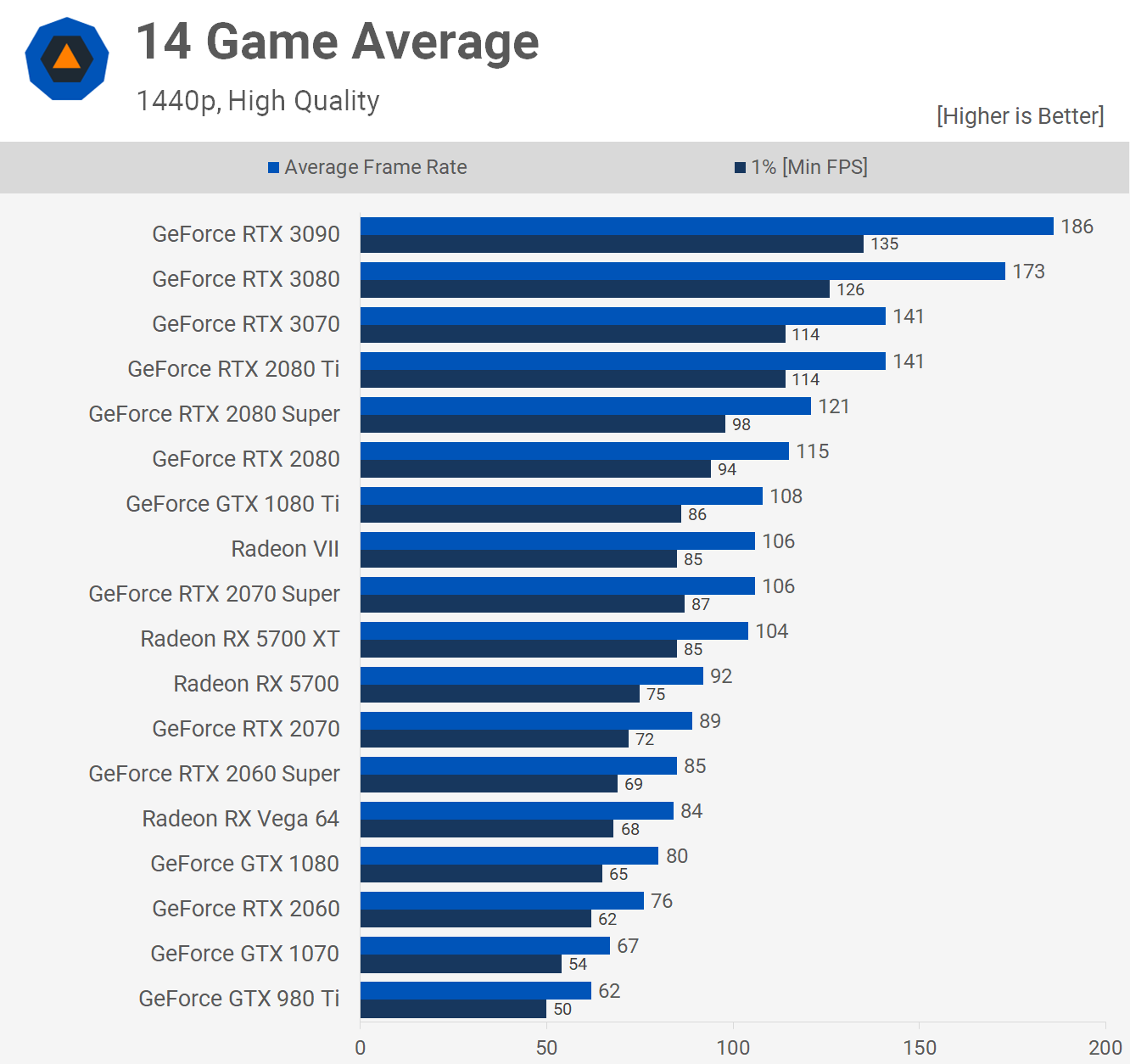
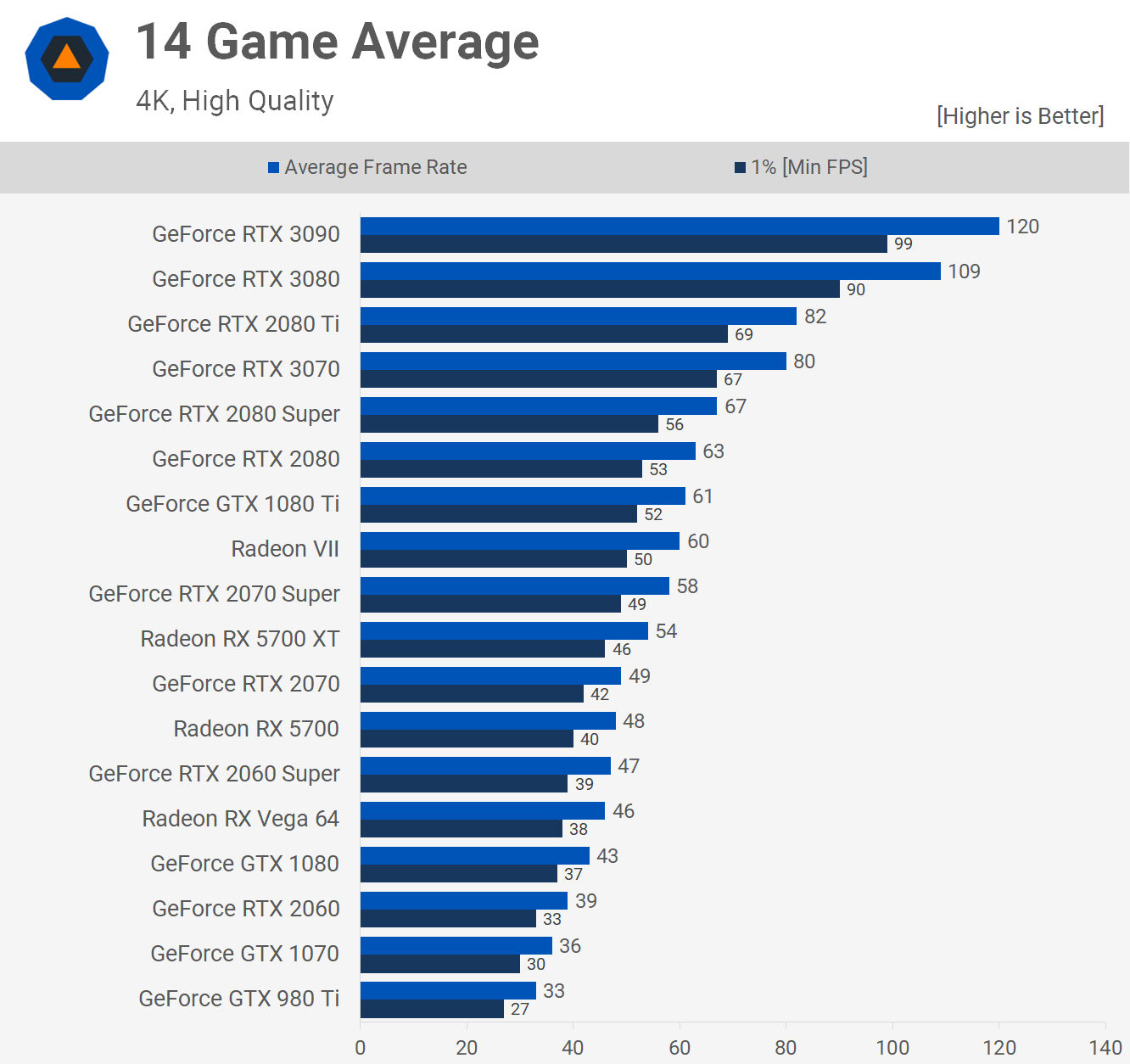
Power Consumption, Performance per Watt
Here's a look at total system consumption using our Ryzen 9 3950X test system. The RTX 3070 pushed total system usage to 371 watts. Under the same conditions the 2080 Ti reached 433 watts, which means the 3070 consumed 14% less power. It also used almost 30% less power than the RTX 3080. We're looking at a similar power draw to the RTX 2070 Super, so a very efficient GPU indeed.

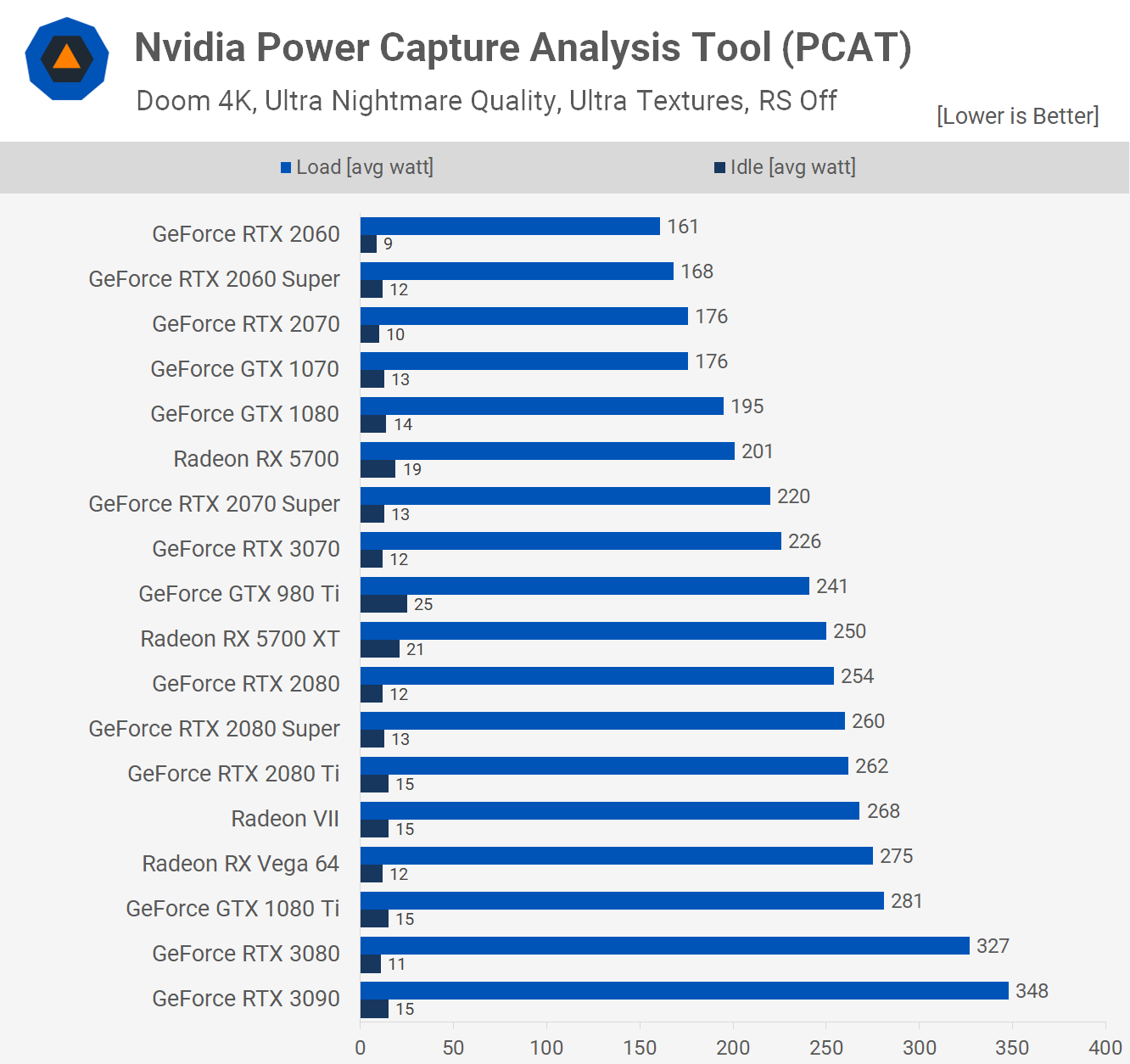
Using PCAT to measure the power draw of just the graphics card we see that the 3070 consumes just 6 watts more or 3% more power than the RTX 2070 Super and 10% less than the 5700 XT.
We're also looking at a 31% reduction when compared to the RTX 3080, and 14% less than the 2080 Ti.
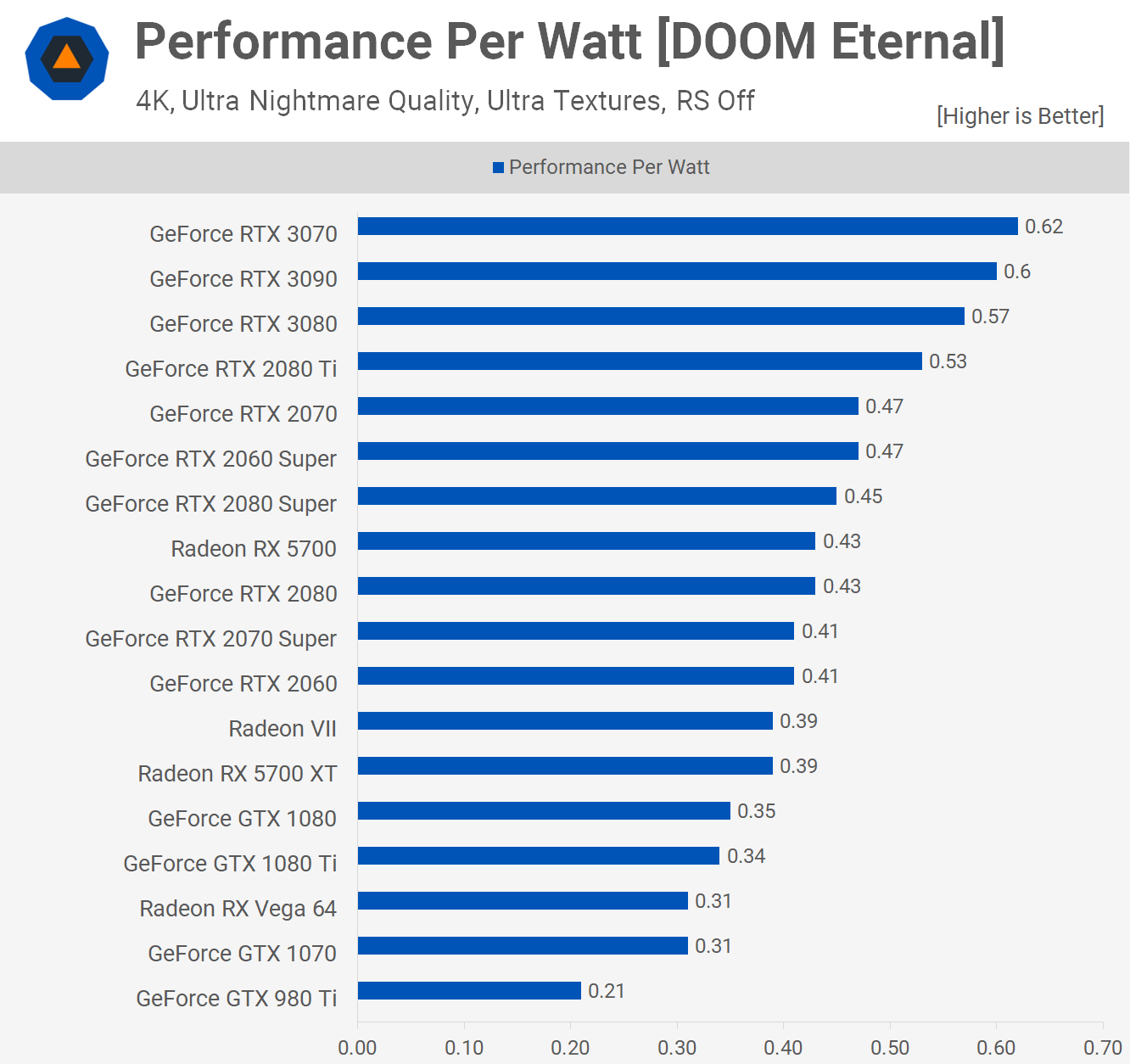
In terms of performance per watt, the GeForce RTX 3070 is the most efficient graphics card we've ever tested, delivering 9% more performance per watt than the 3080 and 17% more performance per watt than the 2080 Ti.
It's also 59% more efficient than the 7nm Radeon RX 5700 XT, so it will be interesting to see how AMD can improve on that shortly.
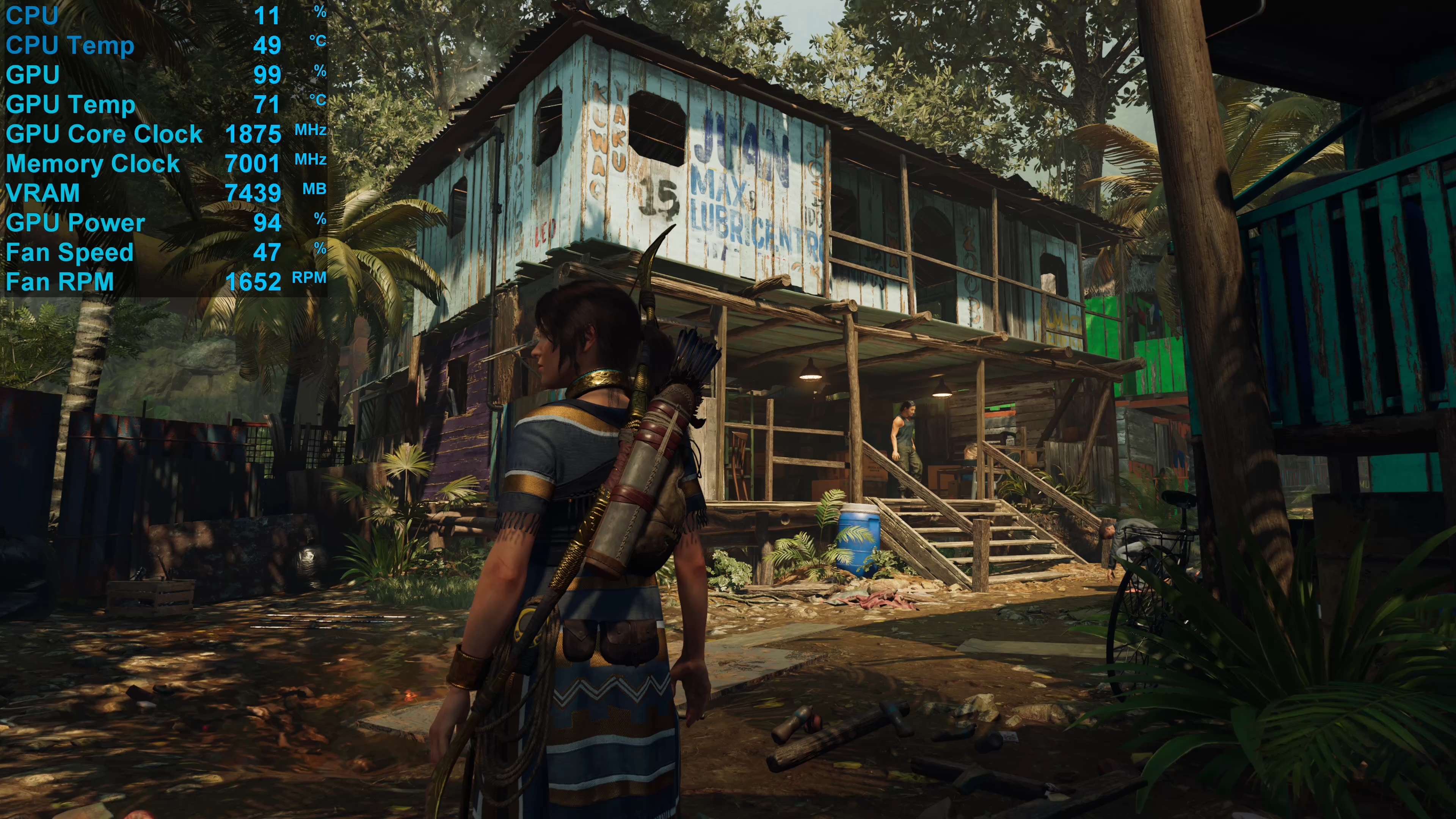
Taking a look at how the GeForce RTX 3070 Founders Edition graphics card ran after an hour of Shadow of the Tomb Raider, the GPU peaked at just 72C with a fan speed of 1650 RPM, which is very reasonable and the card was very quiet. The average clock speed in this test was 1890 MHz, just shy of 1.9 GHz, with the memory operating at 14 Gbps.
Cost Per Frame
Brace yourselves. Here's a look at cost per frame, starting with the 1440p data.
As you can see the RTX 3070 is now the best value graphics card in terms of cost per frame, coming out 7% cheaper compared to the standard RX 5700 and 25% more cost effective than the 2070 Super.

Of course, you're now getting RTX 2080 Ti performance for well under half the price.

The cost per frame data is arguably a little more reliable at 4K where we remove any and all system bottlenecks.
The RTX 3070 remains on top, just beating the RTX 3080 which is still pretty sweet for such a powerful GPU. This means the new GeForce is 27% cheaper per frame than the 2070 Super, and a much improved value proposition at the $500 price point.
What We Learned
Overall, Nvidia's GeForce RTX 3070 is a great high-performance value product. Upcoming competition aside, in today's market the RTX 3070 is as good as it gets in terms of cost per frame and even performance per watt.
The RTX 3070 is the new and much more affordable 2080 Ti. In making that comparison, you get 3GB less VRAM, but make up for that with improved power consumption, shaving off about 60 watts. That means it'll be possible to make more compact graphics cards, or larger models that run cooler and quieter. Oh yea, did we mention this card will run you $500 instead of $1,200?
Compared to the GPU it is replacing, the GeForce RTX 3070 is nearly 40% faster than the 2070 Super. Now, it's going to be extremely important that Nvidia addresses supply and makes sure those base models hit the MSRP.
While we watch that happen (or not), AMD is set to show off 'Big Navi' this week, and no doubt we'll be able to provide reviews of Radeon RX 6000 series cards within a reasonable time frame. Nvidia will see direct competition for most of its GeForce 30 range, including the RTX 3070, which means it may no longer be the best value option at $500. We'll learn that soon enough, and of course, we are counting on AMD to bring some competition that will ultimately benefit gamers and consumers alike.
